

What Size Yacht To Cross The Atlantic? (Here’s What You Need to Know)
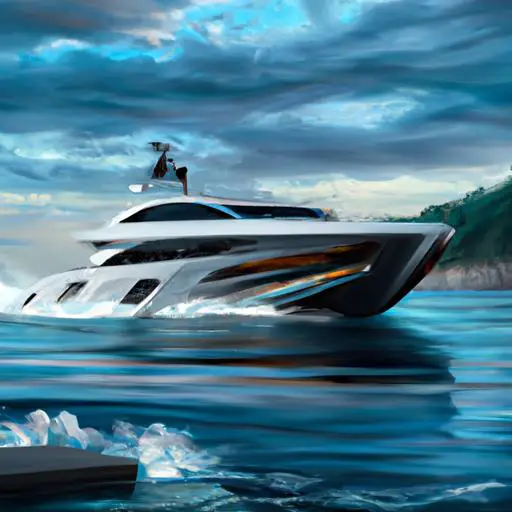
Crossing the Atlantic in a yacht is an ambitious but rewarding endeavor.
Whether youre a recreational sailor or a seasoned professional, the size of the yacht you choose will make a world of difference on the journey.
Before you set sail, you need to consider a number of factors, such as the number of people on board, the size and type of crew, the length of the voyage, fuel and crew requirements, route of crossing, weather conditions, and emergency services available.
In this article, well cover all these topics and more to help you find the right size yacht for your Atlantic crossing.
Table of Contents
Short Answer
The size of yacht needed to safely and comfortably cross the Atlantic Ocean will depend on factors such as the number of people on board, the type of voyage, and the experience of the captain and crew.
Generally, the vessel should be a minimum of 36 feet in length and have enough stowage capacity to carry enough supplies and provisions for the voyage.
The yacht should also be outfitted with the necessary navigation, communication, and safety equipment to make the voyage.
Lastly, it should be well-maintained to ensure reliable performance throughout the voyage.
What To Consider When Choosing A Yacht Size
When deciding what size yacht to choose for an Atlantic crossing, there are several key factors to consider.
The number of people on board, the size and type of the crew, and the length of the voyage will all factor into the size of yacht you need.
A larger yacht will provide more space and comfort, but will also require more fuel and crew to manage.
It’s also important to consider the route of the crossing, the type of weather that is expected, and the type of emergency services available along the way.
The size of yacht should also be determined by the purpose of the crossing and the preferences of the crew.
For instance, if the purpose of the voyage is primarily recreational and the crew is smaller, then a smaller yacht may be more suitable.
On the other hand, if the purpose is more commercial and the crew is larger, then a larger yacht may be the better choice.
The type of vessel is also important.
Sailboats, motorboats, and catamarans all have different requirements for size, fuel efficiency, and crew.
For instance, sailboats require larger masts and rigging, which can limit the size of the vessel.
Motorboats, on the other hand, can be larger and can travel faster, although they also require more fuel.
Catamarans are typically the largest vessels, but they also require the most crew and are the most difficult to maneuver in rough seas.
Finally, the length of the voyage is an important factor.
A longer voyage requires more fuel, supplies, and crew, so a larger yacht may be necessary.
Additionally, a longer voyage may require more sophisticated navigational and safety equipment, so it’s important to consider the type of emergency services available along the route.
In conclusion, choosing the right size yacht for an Atlantic crossing requires careful consideration of several factors.
The number of people on board, the size and type of the crew, the length of the voyage, the route, the type of weather, and the type of emergency services available all need to be taken into account.
Ultimately, the decision should be based on the purpose of the voyage and the preferences of the crew.
Number Of People On Board

When deciding on the size of yacht to choose for an Atlantic crossing, the number of people who will be on board should be the first factor taken into consideration.
The size of the yacht should be able to comfortably accommodate the number of passengers and crew members, with enough space for sleeping, eating, and lounging.
Any extra space that may be needed for storage should also be taken into account.
It is important to note that larger yachts will require more fuel and crew to manage, and may be more expensive to maintain.
Therefore, it is important to make sure that the size of the yacht matches the needs of the voyage and the crew.
Size And Type Of Crew
When selecting the size of your yacht for an Atlantic crossing, it’s important to consider the size and type of the crew.
If there will be a large number of people on board, a larger yacht is likely required to provide enough room and comfort.
On the other hand, a smaller yacht may be more suitable for a smaller crew.
Additionally, the size and type of crew will determine the type of personnel needed to manage the yacht.
For example, it may be necessary to hire a captain and crew if youre crossing a large body of water.
If the crew consists of experienced sailors, a smaller yacht may be sufficient as they will be able to handle all of the boats operations.
Its important to consider the number of people on board, experience level, and the amount of space available when selecting the size of yacht for an Atlantic crossing.
Length Of Voyage

When deciding what size yacht to choose for an Atlantic crossing, one of the most important factors to consider is the length of the voyage.
A longer voyage will require a larger yacht to provide more space and comfort for the crew and passengers.
On a longer voyage, there may be more people on board, providing a need for additional sleeping and eating areas, as well as more room for recreational activities.
Additionally, a larger yacht will be able to carry more supplies, such as food, fuel, and spare parts, making it more self-sufficient and able to handle any unforeseen events.
It is important to consider the route of the crossing, as some areas may be more prone to rough weather or dangerous conditions, and a larger yacht may be better equipped to handle these conditions.
A larger yacht may also require more fuel, as well as a larger crew, to manage the vessel.
Ultimately, the size of yacht will depend on the purpose of the crossing and the preferences of the crew.
Fuel And Crew Requirements
When deciding on the size of yacht to take for an Atlantic crossing, it’s important to factor in the fuel and crew requirements.
A larger yacht will require more fuel and crew to manage, especially if the voyage is longer.
The crew size and type should also be taken into account when deciding on the size of yacht.
A larger yacht will require more crew to manage the vessel, and the crew should be experienced and knowledgeable in seafaring and navigation.
It may also be necessary to hire extra crew members for certain tasks such as cooking, engineering, and maintenance.
Additionally, the yacht should be equipped with the necessary safety equipment such as life rafts and flares, as well as navigational equipment such as depth sounders and GPS.
All of these factors should be considered when deciding on the size of yacht for an Atlantic crossing.
Route Of Crossing

When deciding on the size of yacht for an Atlantic crossing, it is important to consider the route of the crossing.
For example, a longer voyage from the United States to Europe will require a larger yacht than a shorter one from the Caribbean to the United States.
A larger yacht will provide more space and comfort, as well as more fuel and crew to manage.
Additionally, the route of the crossing should be considered for emergency services that may be available along the way.
For example, if the voyage will be close to land, there may be medical facilities and emergency services that could be reached in the event of an emergency.
However, if the voyage will be far away from land, it is important to consider the type of emergency services that would be available if needed.
Weather Conditions
When deciding what size yacht to choose for an Atlantic crossing, it is essential to consider the weather conditions that may be encountered during the voyage.
A larger yacht is more likely to be able to handle a variety of weather conditions, such as high winds, heavy rain and strong waves.
The size of the yacht should also be considered when it comes to the type of weather expected.
A larger yacht is more suitable for long-distance voyages, as it is more capable of handling the prolonged and potentially extreme weather conditions.
It is important to note, however, that larger yachts may require additional fuel and crew to manage in order to safely navigate the seas.
When preparing for an Atlantic crossing, it is important to research the expected weather conditions for the route.
Knowing the weather conditions that may be expected on the route can help to determine the size of the yacht that is suitable for the voyage.
For example, if the route is expected to experience strong winds, it is best to choose a larger yacht that is capable of handling the windy conditions.
Additionally, if the route passes through areas with higher than average waves, a larger yacht is much more suitable for the voyage.
It is also important to consider the type of emergency services available along the route.
In the event of an emergency, such as a medical emergency or a vessel in distress, a larger yacht is more likely to be able to access the necessary help.
Additionally, a larger yacht will be able to carry more supplies, such as food, water, and other equipment, which can be essential in an emergency situation.
Overall, the size of the yacht for an Atlantic crossing should be based on the number of people on board, the size and type of the crew, the length of the voyage, the route of the crossing, the type of weather that is expected, and the type of emergency services available along the way.
With the right amount of research and planning, the perfect size yacht can be chosen for a successful and safe Atlantic crossing.
Emergency Services Available

When planning a transatlantic crossing, it is important to consider the type of emergency services available along the route.
On a smaller vessel, you may not be able to access all of the necessary services, so it is important to choose a vessel with enough room to accommodate the necessary crew and equipment, as well as enough fuel to reach the destination in the event of an emergency.
When considering the size of the yacht, the type of emergency services available should be carefully assessed.
For example, if you are crossing during hurricane season, it is important to choose a vessel that can withstand the high winds and potentially heavy waves.
If you are crossing in an area where search and rescue services are available, it is important to have a vessel large enough to be spotted quickly.
It is also important to consider the type of emergency services available at ports of call along the route.
If you are traveling to a remote area, it is important to have a vessel with enough room to accommodate the necessary crew and equipment to make port in the event of an emergency.
If you are traveling to a port with a significant presence of medical and emergency personnel, it is important to have a vessel large enough to accommodate the necessary personnel.
Overall, the size of the yacht for a transatlantic crossing should be based on the purpose of the voyage, the number of people on board, the size and type of crew, the length of the voyage, the route of the crossing, the type of weather that is expected, and the type of emergency services available along the way.
By taking all of these factors into consideration, you can ensure that you have the best possible vessel for your crossing.
Final Thoughts
Choosing the size of yacht for an Atlantic crossing is an important decision that requires careful planning.
The size of the yacht should be determined by the number of people on board, the size and type of the crew, the length of the voyage, the route of the crossing, the weather conditions, and the availability of emergency services.
Ultimately, the size of the yacht should be based on the purpose of the crossing and the preferences of the crew.
With the right information and careful consideration, you can make an informed decision on the right size yacht to choose for your Atlantic crossing.
James Frami
At the age of 15, he and four other friends from his neighborhood constructed their first boat. He has been sailing for almost 30 years and has a wealth of knowledge that he wants to share with others.
Recent Posts
When Was Banana Boat Song Released? (HISTORICAL INSIGHTS)
The "Banana Boat Song" was released in 1956 by Harry Belafonte. This calypso-style song, also known as "Day-O," became a huge hit and remains popular to this day for its catchy tune and upbeat...
How to Make Banana Boat Smoothie King? (DELICIOUS RECIPE REVEALED)
To make a Banana Boat Smoothie King smoothie at home, start by gathering the ingredients: a ripe banana, peanut butter, chocolate protein powder, almond milk, and ice. Blend the banana, a scoop of...

Crossing The Atlantic By Motor Yacht? Everything You Need To Know
A yacht can travel both the Pacific and Atlantic seas. A sailing boat or a motor yacht may span the Pacific and Atlantic seas. It’s preferable to have a tank large enough to store the amount of fuel you’ll be burning.
Not all yachts, however, are capable of undertaking these journeys. If you intend to sail across any of these seas, be sure you have an ocean-going boat as well as the necessary equipment and abilities.
Some yachts will not have enough fuel to make the journey and will be transported aboard specially constructed freighters.
In this essay, I’ll go over some of the key facts concerning yachts that you should be aware of before embarking on your journey.
How Long Does it Take to Sail Across the Atlantic?
Sailing across the Atlantic takes roughly 3-4 weeks, but if you’re lucky, use shortcuts, and have a speedy sailboat, you can accomplish it in two weeks. It might take up to a month if you don’t get enough wind for a week or longer. It’s critical to know the shortcuts, optimize speed, and have cross-Atlantic sailing expertise.
How Far Can a Yacht Travel?
In an 8-hour day, a powered boat of 35 feet in length can go over 200 miles at a speed of 25 knots. They can cover about 300 miles in a day at 35 knots. You can go thousands of kilometers if you have adequate gasoline or fill-ups.
Can a Yacht Cross the Atlantic Ocean?
A typical powered boat would require a tank with a capacity of roughly 5000 gallons of petrol and a fuel efficiency of 2.5 nautical miles per gallon to traverse the Atlantic.
This is based on a gasoline consumption rate of 4 gallons per hour at a cruising speed of 10 knots. Of course, this is at cruising speed. They can’t keep going at top speed for an extended amount of time (which would burn through the fuel faster).
The voyage (about 3,000 miles) would take 300 hours or 12.5 days at 10 knots.
Every year, sailing boats cross the Atlantic since the only fuel they use is to power generators that power aboard equipment.
When the weather isn’t cooperating, some fuel may be utilized to power the boat.A fast boat traveling at 25 knots takes roughly 4–5 days to cross the Atlantic Ocean. In a sailing yacht, though, it would take longer (which also depends on the winds).
We have a lot more information on which boat types are capable of crossing oceans. If you’re thinking of taking a boat journey across the oceans, this is a must-read.
Read more: Boat Fuel Tank Vent Open or Close (What to do?)
How Large Does A Boat Need To Be In Order To Cross The Atlantic Ocean?
To cross the Atlantic, you’ll need a boat that’s at least 30 feet long, whether you’re sailing or motoring. For safety and comfort, your boat should be at least 40 feet long. Although the experience of sailing or motoring across the Atlantic is vastly different, both require a boat of this size. If you plan on having a crew on board, you may need a boat that is much larger. Why do you need a 30 or 40 foot boat when you can cross the Atlantic with a lot smaller boat? The simple answer is that attempting to cross in anything smaller may be extremely risky and inconvenient. Here are a few reasons why you should get a boat at least this size:
Seaworthiness
You don’t want to be stranded in a tiny boat as the waves start to rise. In the Atlantic, boats significantly larger than 30 or 40 feet are often sunk due to bad weather.
If you go any smaller, you run the danger of being sunk in a storm. Make the mistake of assuming you can organize your vacation around the possibility of bad weather.
Storms may appear out of nowhere in the unpredictable Atlantic Ocean, and any vessel could be caught off guard, regardless of the season. Although not every 30 or 40-foot yacht is seaworthy enough to cross the North Atlantic, this size is a minimum need for ocean navigation.
Supply Storage
Even if you want to conduct as much open-ocean fishing as possible while crossing the Atlantic, you’ll need to have supplies. You should have enough food and drink for everyone in your crew to last the whole voyage.
Keep in mind that crossings can take longer than expected, so make sure you have adequate supplies to account for delays. You’ll need to reserve gasoline if you’re crossing in a motorboat or if you have a backup motor for your sailboat.
You may need a larger boat if you need to store a lot of provisions for your voyage. Too much weight can cause your boat to sink in the water, making even a seaworthy boat much less seaworthy. A boat that is too low in the water might be swamped by waves more quickly.
Before you load up your boat and set out on the water, be sure you know how much it can securely handle.
Comfort Of The Crew
Until you’ve spent a few weeks out on the open sea aboard a 30 or 40-foot boat, it may appear to be rather large. If you want to enjoy your passage, you’ll need a boat large enough for everyone on board to have their own space and stretch their legs at regular intervals throughout the journey. Even with a one- or two-person crew, 30 to 40 feet is required to achieve this aim.
Crossing The Atlantic In A Motorboat
You might be surprised to learn how much gasoline it takes to cross the Atlantic in a powerboat. Simply storing all of that fuel aboard your yacht can take up a lot of space.
Fuel should not be utilized for longer than 90 days in most cases. This should be enough time for you to cross the Atlantic, but it could not be. You may preserve fuel for up to six months or even two years if you use a fuel stabilizer or don’t mix it before use.
Fuel storage will require a large portion of your entire storage space. For the same journey, you could require a larger motorboat than a sailboat.
The advantage of crossing in a motorboat is that, while it may require more storage and gasoline, utilizing it instead of the wind for movement may make your route much more predictable. A speedboat can move in nearly any situation except particularly severe and inclement weather, but a sailboat must wait for the wind to be right to make headway. As a result, you won’t need as many resources to prepare in case you don’t arrive at your location on time.
Enjoy Your Crossing
It’s difficult to imagine a more thrilling experience than sailing the Atlantic Ocean on your own boat. You will most likely have a very pleasurable vacation whether what kind of boat you choose, as long as you choose a boat of at least 30 or 40 feet and plan wisely.
Leave a Comment Cancel reply
Save my name, email, and website in this browser for the next time I comment.

What kind of boats cross the Atlantic Ocean? 7 Options explained
You're looking for a way to go across the Atlantic without flying. What options are out there? Here are 7 options explained. I sailed five of them across the Atlantic.

Sailing an ocean on a Small sailing vessel
Many privately owned sailing vessels cross the Atlantic to spend a sunny sailing season either in the Mediterranean or Caribbean or as part of their around-the-world voyage. It is a big deal for them and attracts all sorts of seamen and women: young ‘pirate’ dudes who have escaped the rat race, adventure couples, retirees, families, groups of friends, and single older sailors.
The largest share of the captains is between 50 – 65 years old. It's the group that has the time and money resources to sail. All sorts of nationalities make the crossing, with the French and Swedish seeming to dominate the fleet.
By crewing on a small sailing yacht, you'll be involved with every aspect of seamanship and sailing. You will learn a lot for sure. Many boats choose to stop in Cape Verde or the Azores, and often don’t have tight schedules.

Boats come in all sorts of shapes and materials. Hulls are made from steel, wood, aluminium, and today mostly of fibreglass. 90% of the boats crossing the ocean is bigger than 36ft, with most of them measuring around 44ft. (14m).
A smaller yacht could also be perfectly ocean-worthy. I've seen boats of 26 ft. crossing the pond. Some adventure people row across the Atlantic. In 2017 someone even Stand Up Paddled (SUP) across the Atlantic. Being on any boat is a luxury compared to that.
Six people (out of 100) I interviewed in my book crossed the Atlantic on a boat smaller than 36ft. and all of them would like to do it again. This year we also have Nadiem, Ocean Nomads member who'll sail across in his little sailboat.
Both monohulls and catamarans cross the Atlantic. Catamarans are generally faster, more spacious, and rock less. On the flip side: they can flip! If they do, it’s a major challenge to come up again. Don’t worry, this is extremely unlikely. Having seen hundreds of boats planning, preparing and making the crossing, I estimate that roughly 70% of the boats that cross are monohulls.
With Ocean Nomads we sometimes have small liveaboard sailing vessels looking for crew in the network to sail across, or members recommend a vessel from their networks.
In our brand new Ocean Nomads Crew Course , I share all the tips and tricks for finding and securing a safe sailing vessel with which to sail as crew. Eco & Adventure style. Proper preperation makes all the difference for a happy, safe and meaningful voyage.
Sail with me & Ocean Nomads in Greece in 2024! Level up your sailing skills and make ocean people connections accelerating your sailing journey. 4 vessels, 11 days, 30 nomads! Learn More.
Sail across the Atlantic on Superyacht
Many larger yachts cross the Atlantic as a ‘delivery’, where a boat needs to be taken from point A to B. Boats have to be moved across the ocean for a new charter season, for the private owner who will hop on board again on the other side, or because someone bought it on the other continent.
Usually, paid and professional crew do these types of deliveries. As an amateur crew member, you can be a cheap extra set of hands.
A yacht is a ‘superyacht’ when it is over 24 metres (79ft.). These are big yachts. They often have generators running every day to keep fridges and freezers going. They load up thousands of litres of fuel and water, and are less dependent on the wind.
As such, there is less risk and generally more comfort. These trips often run on a tight schedule, so there won't be much flexibility for stops along the way (like in Cape Verde or the Azores). In most cases, there will also be more people on board (five-eight people compared to three-five on smaller vessels).
Crossing on a big boat like this is faster, less adventurous, and more comfortable. The crew are often younger, and some live and work permanently on the boat. Many of them have crossed the Atlantic Ocean numerous times and are therefore less excited about it than the average ‘yachtie'.
Timelines are tight and there’s often not time for island exploration. Usually, you are expected to work hard. Also, it's not unusual that superyachts don't even use the sails to prevent damaging, and have the sails tip /top for when the owner comes on board.
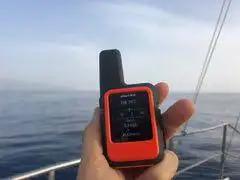
Garmin Inreach Mini2
A transatlantic on a charter yacht.
If you would rather not have the pre-crossing adventure or spend too much time searching for a boat, and/or if money is not an issue, you can book a charter ocean passage. Charter trips are organised on all sorts of boats: small, big, monohulls, catamaran, and racing boats.
Numerous racing yachts cross the ocean reaching boat speeds up to 35 knots! In addition to professional crew, spots are sold and you can sign up for a wet and speedy adventure guaranteed.
A charter trip costs between €2,000 and €10,000. An organized trip like this could be advantageous if you’re on a tight schedule. It’s more likely to leave on the planned date.
At the same time, the time schedule could be a disadvantage. What if the weather window is not ideal to leave? In many cases, though not always, everything is taken care of such as provisioning and cooking, so you wouldn’t have to figure out much yourself.
Charter organisations need to comply with a lot of safety requirements and check ups to legally carry out the voyage. This assures some safety but still you need to do your homework if it's a safe ride.
Another consideration of booking this type of passage is that you won’t know your shipmates. When you search the adventurous way, you have the opportunity to meet the other sailors before you commit to joining the crew. On a chartered passage you’re stuck with whoever else has booked the trip, even if you don’t like them.
With Ocean Nomads we work together with SV Twister and have the following Atlantic Crossings planned .
Sailing the Atlantic on a Tall ship
Every year, numerous tall ships sail across the Atlantic, like the Stad Amsterdam or Oosterschelde, and this year also SV Twister :) . Sailing across on a large traditional boat is spectacular. Many young people work on the tall ships. You could either try that or buy yourself a passage.
I wrote the above in my book, a friend of SV Twister reached out to me. Long story short, last year 2022/2023 I, with Ocean Nomads, organizing a trip across the Atlantic, Caribbean sea, and back across the Atlantic , and I now experience this way of sailing across also. You can join this trip in 2025 .

Update! We're back from the Atlantic. And we made a film about it:) Here is a the film about Sailing the Atlantic with Ocean Nomads. My 5th Atlantic crossing.
Travel the Ocean with a Sail Boat Ferry
There are no sailing ferries (yet), although boats are being built for this purpose. At the time of writing, Voyagevert is conducting feasibility studies to construct the fastest and largest sailing catamaran for a ferry service as a sustainable alternative to flight for transatlantic travel. Also Fair ferry is looking into it.
A transatlantic on a cruise ships
Another kind of ferry are the cruise ships. More and more cruise ships cross the Atlantic to do the season on the other side. They need relocation and spots on board are sold as ‘repositioning cruises.' It's often cheaper than airfare and your house rent combined. One option that is cool, is ‘ Nomadcruise ,’ an Atlantic crossing for entrepreneurs and digital nomads.
These floating cities are not an environmentally friendly way to cross. It takes around eight days and a lot of noise to cross with a cruise ship. Data on emissions is remarkably difficult to find. Some sources state that an average cruise ship at sea emits more, and less filtered, smoke than one million cars combined each day.
In a one-week trip, a large cruise ship generates ten backyard swimming pools of blackwater (raw sewage) and 40 more swimming pools of greywater (water from sinks, baths, showers, laundry, and galleys). It also generates large volumes of oily bilge water, sewage sludge, garbage, and noise.
Sail Across the Atlantic on a Cargo ship
More cargo ships cross the Atlantic than sailboats. This is a non-sailing ship option that can take you across. Cargo ships usually rent out a few cabins to passengers. This costs a few thousand euros. Travelling with a cargo vessel can be a good alternative if you want to cross the ocean, don’t like sailing, and do not want to fly. Prepare to be surrounded by engine noise. Crossing on a cargo would take one to two weeks. Depending on the weather, cargo and size, cargo vessels run between 15-25 knots .
There are also sailing cargo Atlantic crossing possibilities out there. ‘ Tres Hombres ‘ is a 32 metres Schooner transporting traditional goods like rum and chocolate between the Caribbean and Europe. Timbercoast is a 1920 built 43.5m Schooner that transports goods like coffee and gin. Both ships welcome crew on board helping out with this sustainable way of transporting goods.
My ocean sailing preference
“What kind of boat are you joining?” This was the first question most people asked me when I told them I was going to cross the Atlantic Ocean by sail. At the time, I knew nothing about boats, and thought “Does it matter? I just want to make the passage!” Having sailed across on five completely different boats across the Atlantic, I know now that the type of boat determines large part of the experience.Not just because of the boat, but because of the tasks and people involved with that type of boat.
My preference is to crew on a smaller monohull sailboat of 40-44ft – basic but adventurous and on these boats, I've met the coolest captains. Monohulls are more fun to sail. It's easier to ‘feel' the boat as opposed to a catamaran. It's kind of like a scooter versus a quadbike.
Smaller boats generally allow for more exploring and socialising time around the harbour- since there's usually less work to be done. This is the adventurous way of travelling by sailboat where you go with the weather and with others as excited about the adventure as you. I sailed as crew on these kind of sailboat for years ( Here is a video summary of my story ).
At the end, it's the people who make the trip! In my survey amongst 100 Atlantic ocean Crew & Captains who have done it, almost everyone answered to the question: “what would you do different, if you'd go again?” “I'd take more time to find the right vessel, with like minded and value sharing people.
Finding a boat is the easy part, finding the right and safe vessel aligned with your vibes and values, is the main challenge. With Ocean Nomads we now created a toolkit to help you dip your toes into the ocean nomads lifestyle , happy, safe, and meaningful.
How to find a sail boat ride across the Atlantic?
Here’s what I and ocean nomads have created for you to help you get out there, happy, safe, and meaningful.
It’s that time of the year again when many head south and west to follow the sun, catch the tradewinds, and realize ocean dreams.
Travelling an ocean on someone else’s sailing boat, or taking a stranger on board is not a straightforward endeavour. To be ready to expect the unexpected, careful investigation and preparation is essential. Four Ocean Crossings and 30.000 Miles of boat hitchhiking on dozens of vessels, as well as organizing crew for +10 different trips now, I figured out a few things, and keep learning:).
Here are the latest waypoints to help you on an ocean adventure, fun & impact:
- We’ve created resources and mini-courses on Sailing across the Atlantic, Offshore crew packing lists, Ocean crew preparing tips. Provisioning with minimum waste, Veggie recipes, Zero waste nomad life, and ocean education information. But the real value is the network you can tap into, find answers, connections, and support to make the ocean adventure dreams real.
- Because of that we can create way real value and attract real dedicated members only who are serious about making dreams real.
NEW in 2024! The Sailboat Travel Crew Prep course.
I help you transition from being new to sailboat travel to a confident crew member securing a position safe, soon and sustainable. All my sailing lifestyle crew tips condensed into one pack.

Ps. If any of the above has helped you, I'd love to hear so! Make a comment, leave a review on @oceanpreneur or @oceannomads.community, fill out the big Atlantic Ocean Crew survey
Related Posts

oceanpreneur
📍Hiking across the Pyrenees 🐕🏕️ GR11 🧜♀️ Travel with nature 🗺️+15yr Fulltime Adventurer by Sail & Van 🧭Sail with me & @oceannomads.community

On which boat have you crossed or would you be most exciting to cross the Atlantic?

Hi! My name is Suzanne. I'm here to excite and guide you into slow travel adventures, in tune with nature. 🗺️+15yr Fulltime Adventurer by Sail & Van 🧜♀️⛵️🚐✨🏕️
Adventure Videos
📍Hiking across the Pyrenees 🐕🏕️ GR11 🧜♀️ Travel with nature 🗺️+15yr Fulltime Adventurer by Sail & Van 🧭Sail with me & @oceannomads.community
- Understand what Rip Currents are, it’s dangers and how to stay safe with the sea
New Book on How to Travel by Sail as Crew
- How I prepare for my first solo long-distance hike with my dog | GR11 Trail La Transpirenaica
- Hiking and Camping in the Caribbean. Gear Essentials.
- Best Compost Toilets for Van Life, Campers and Sailboats | The Ultimate Guide 2024

Previous Post Tips on Foraging for Food. Journey to Self Sufficient Nomadlife
Next post why sail the ocean 12 reasons to jump on board an atlantic sailing adventure, you may also like.

The best appropriate boat is about 30 to 40 feet long. In case you using a smaller boat, there is a possibility that it may not withstand harsh weather conditions and ocean currents.
thank you so much for this cool article.
- Pingback: Keep Going In The Right Direction | Relationship Anatomy Inc
Leave a Reply Cancel Reply
Save my name, email, and website in this browser for the next time I comment.
subscribe to our newsletter
Sail With Me

© 2024 Oceanpreneur. Suzanne van der Veeken. Registration: KVK 60416947 VAT: NL001950161B95
- Canary Islands
- Saint Lucia
- Saint Vincent and the Grenadines
- Sail with me
- Crewing Tips
- Sail across the Atlantic Tips
- Sailing & Sustainability
- Sailing Opportunities
- Ocean Nomads Community
- Ocean Crew Course
- LONG DISTANCE HIKING
- Natural Living
- Ethical Travel
- Zero Waste & DIY
- Waterfiltration
- Conscious Gift Guide
- What can you do?
- Ocean Education
- Tips on Selfpublishing a Book
- What I read / listen
- Work with me
- Partners & Press

Can A Yacht Make It Across The Atlantic? (Factors To Consider)
When it comes to crossing the Atlantic Ocean, there is no one-size-fits-all answer. The type of yacht you choose, the route you take, and the conditions you face will all affect how long it takes you to make the crossing.
In this blog, we’ll take a look at some of the factors you need to consider when making the decision to sail across the Atlantic.
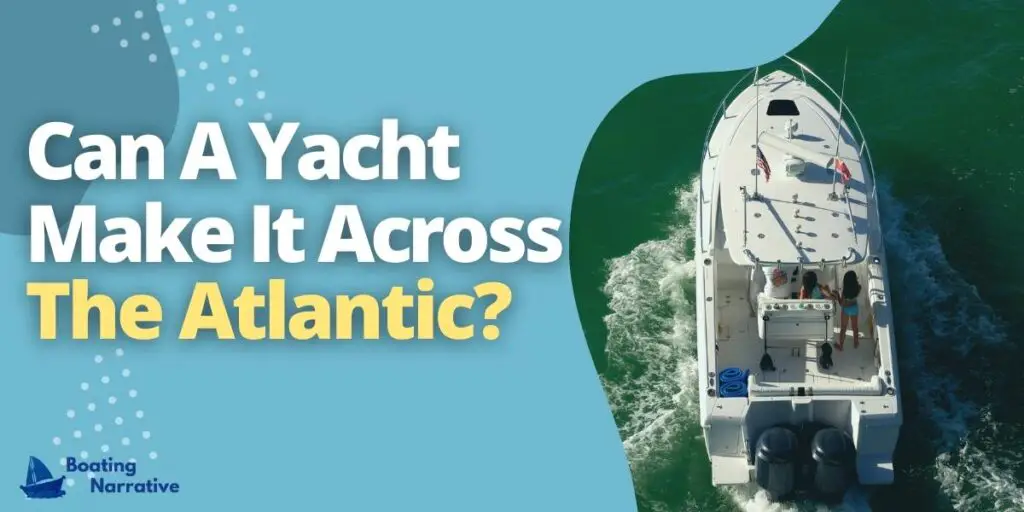
The First Question You Need to Ask Yourself Is What Type of Yacht Is Best Suited for an Atlantic Crossing?
There are a few different options, and the best one for you will depend on your experience and budget. If you’re a beginner sailor, you may want to consider a smaller boat that is easier to handle. If you’re an experienced sailor, you may want to go for a larger boat that can handle rough seas.
Once you’ve chosen the type of yacht, you need to consider the route you’ll take. The best way to cross the Atlantic is usually via the Cape Verde Islands or South America. These routes are shorter and more direct, which means that your sailing time will be shorter. However, these routes are also more challenging, so it’s important to choose one that you’re confident you can handle.
How Long Can You Sail a Yacht Across the Atlantic?

This will be determined by a variety of things, including the size of your yacht, the route you take, and the weather conditions. Most yachts can make the crossing in about two weeks, but it’s important to be prepared for rough seas and possible delays.
Assuming twenty days at 12 knots per day, a yacht crossing the Atlantic can travel 2,880 nautical miles at an average speed of 14.5 knots (nautical miles/hour).
This number assumes no stormy conditions can slow down your voyage west across the Atlantic Ocean, however, if the sailing time is extended due to rough ocean waters or winds preventing you from reaching every mile at its fastest sailing rate.
How Much Fuel Do You Need to Make It Across the Atlantic?
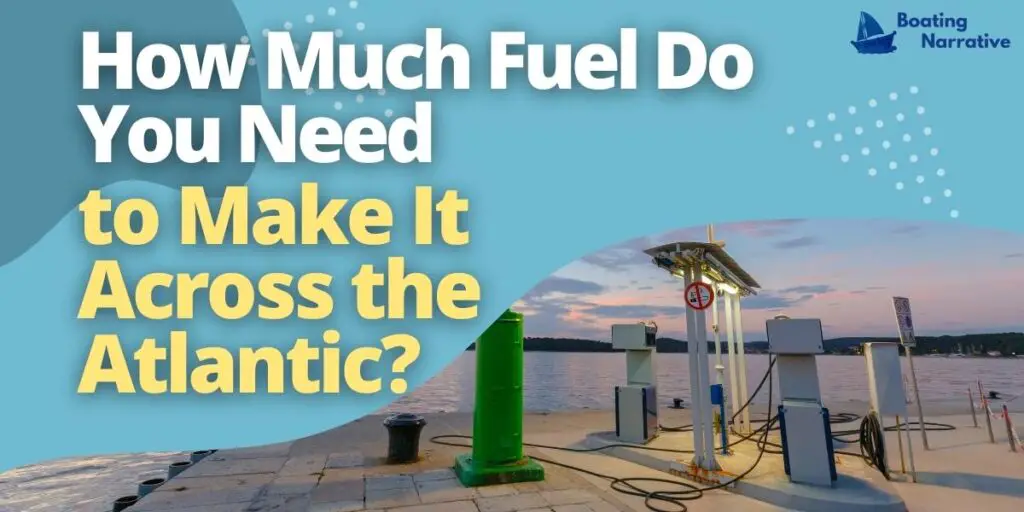
This will vary depending on the size of your yacht and the route you take. On average, you’ll need about 100 liters of fuel per day to make the crossing. Note: Fuel consumption at a speed of 15 knots will be increased during emergencies thanks to going at full throttle.
How Long Can Your Yacht Sail Without Refueling?
The average cruising yacht can sail for about three weeks without refueling. However, this can differ depending on the yacht’s size and engine type. The weather should also be taken into account. The Atlantic is a notoriously windy ocean and can be treacherous in the winter months.
-Make sure you have a good weather forecast and are prepared for rough seas.
-Make sure the sails are in good condition, the hull is clean and free of barnacles, and the engine is well-maintained.
-Finally, you need to make sure your yacht is in good condition.
How Do You Choose the Right Boat for Your Atlantic Crossing?
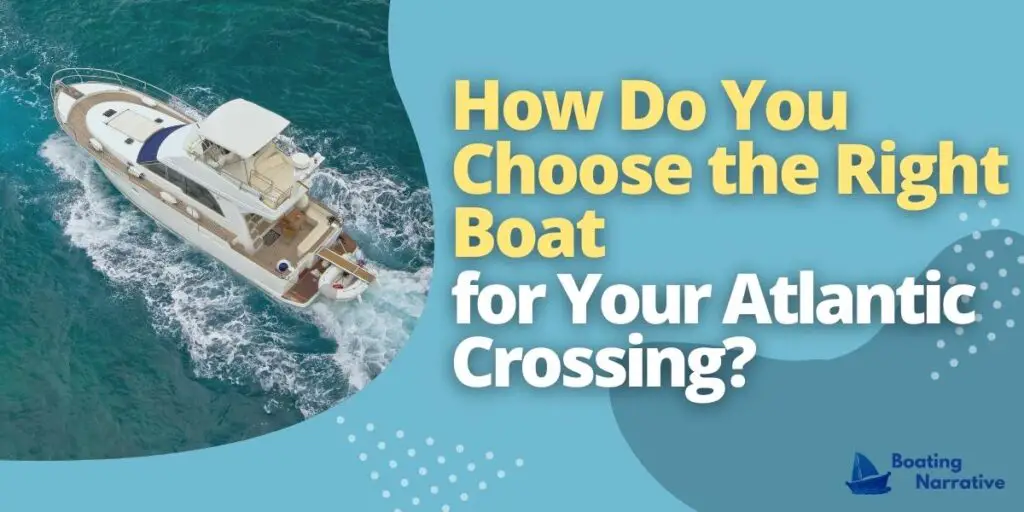
The trip can be made by several different types of vessels. The most popular are sailboats. Sailboats are the best choice for those looking for a more leisurely crossing. They can sail with the wind and don’t have to rely on engines to get them across.
This makes for a more enjoyable crossing, but it also means that the crossing can take longer. If you’re looking for a quicker crossing, you may want to consider a powerboat. Powerboats can make the crossing much faster, but they can also be more difficult to sail.
Another factor to think about while selecting a boat is its size. For a crossing of this length, you’ll want a boat that’s at least 30 feet long. This will give you enough room to sleep, eat, and store your belongings. You’ll also want a boat that’s stable in bad weather. A boat that’s too small or too unstable could be dangerous in rough seas.
Finally, you’ll want to think about the type of sailing you’ll be doing. If you are doing a lot of sailing, you’ll want a boat with a good autopilot. If you are mostly motoring, you’ll want a boat with a good engine.
How Many Sailors Do It?
The number of sailors who make the crossing every year varies, but it’s estimated that about 1,000 yachts make the crossing each year.
Across the Atlantic, there are many sailors that complete the voyage in a motor yacht. In order to make it across, the yacht must have enough fuel capacity, and the time of year must be right. The ocean can be a harsh place, so a sailing yacht is not always the best option.
How Do You Set Sail Across the Atlantic?

The process of setting sail for an Atlantic crossing can be daunting, but it’s not as difficult as it seems. The first step is to double-check that you have all of the necessary supplies, including food, water, fuel, and spare parts. Once you’re ready, you can set sail for the open ocean.
- The weather can be a major factor in deciding whether or not to set sail
- You’ll want to make sure you have enough fuel to make the trip
- It’s important to make sure your yacht is in good condition and is properly equipped for the journey
How Big Does a Yacht Have to Be to Cross the Atlantic?
There is no one definitive answer to the question of how big a yacht must be to make a successful transatlantic crossing. The size of the yacht, its draft, the number of crew and passengers, and the weather conditions at the time of the crossing will all be factors in the success or failure of the voyage.
That said, a yacht that is too small may not have the stability or range required to make the journey, particularly in rough weather. A yacht that is too large may be unwieldy and difficult to manage in tight quarters or in choppy seas.
In general, a yacht that is at least 50 feet long with a draft of at least six feet will have the stability and range to make a successful crossing. However, experienced ocean sailors may choose a smaller or larger yacht depending on the conditions they expect to encounter.
Many yachtsmen opt to cross the Atlantic in a catamaran, which is more stable and has a greater range than a monohull yacht. Catamarans also tend to be faster than monohulls, making them a desirable option for longer crossings.
How Far Can You Travel on a Yacht?
While most yachts can only travel about 500 miles per day, there are a few that can travel up to 1,000 miles per day. Yachts can also travel from the Mediterranean to the United States. The longest route for a yacht is the Great Circle Route. This is a route that goes around the world.
Yachts can travel up to 25 knots (29 miles per hour). This is the cruising speed for most yachts. The speed of a yacht depends on the wind and the waves. The wind can push a yacht in the direction that it is going. The waves can help a yacht move forward.
There are many things that a yacht captain needs to know before they set sail. They need to know the weather conditions, the winds, and the waves. They also need to know the route that they are taking.
Can a Yacht Survive Through Rough Seas?

Yes, a yacht can survive through rough seas, but it’s important to choose the right boat and to be prepared for the worst. Ensure that you have enough food and water and fuel to make it through any type of weather.
However, you need to be prepared for all kinds of conditions. Headwinds can slow down yachts, and the middle of the ocean can be a lonely place.
- Yachts need to be well-equipped for the journey.
- They need to have sturdy hulls that can withstand the impact of waves.
- Make sure they have strong masts and rigging.
- Yachts need to have a good supply of food and water.
- They need to have charts and navigational tools.
What Are the Pros and Cons of Sailing Across the Atlantic?
The pros of sailing across the Atlantic include getting to enjoy the wide ocean and seeing some of the world’s most magnificent vistas.
It’s difficult to beat the difficulty and adventure of sailing such a great distance. The ocean is also a great place to get away from it all, and there is a sense of freedom that comes with sailing on the open seas.
There are also a few potential cons to consider. One is the fact that weather conditions can be unpredictable, and storms can pop up quickly. Navigation can also be difficult in open water, and there is always the possibility of running into trouble.
Another consideration is the distance itself. The 3,000-mile Atlantic passage from Europe to the Americas is arduous, and it might take weeks or even months to complete.
In the end, whether or not to sail across the Atlantic is a personal decision. Those who are drawn to the challenge and adventure of such a voyage will likely find it an unforgettable experience. However, it’s critical to be aware of the hazards and to be prepared for the worst.
How Many Yachts Make the Crossing Every Year?
The number of yachts that make the crossing every year varies, but it’s estimated that about 1,000 yachts make the crossing each year.
The journey typically starts in late summer, when the westerly winds are strongest. It’s a great experience to motor across the north Atlantic, and many boats have successfully completed the crossing.
- The weather can be a major factor in deciding whether or not to set sail.
- You’ll want to make sure you have enough fuel to make the trip.
- It’s important to make sure your yacht is in good condition and is properly equipped for the journey.
How Long Does It Take to Make the Crossing?
On average, it takes about two weeks to make the crossing, but it can take longer if you encounter bad weather.
The journey can take longer if the yacht anchors in harbors, but this can also add to the cost of the trip. The bluewater sailing is a beautiful experience, but it is important to be aware of the weather conditions and to have sufficient supplies on board.
How Much Does It Cost to Make the Crossing?
The cost of making the crossing will vary depending on the type of yacht you choose and the route you take. However, on average, it costs about $5,000 to make the crossing.
Making a crossing from the US East Coast to Europe on a yacht can be a costly and time-consuming proposition. The main costs are fuel, food, and berthing. There are several ways to reduce the costs.
- Using a solar panel to power the boat can reduce the need for fuel.
- A bigger boat will also provide more space for provisions, and sailing on a freighter can avoid the need for berthing fees.
- The main challenge is the distance.
What Are the Dangers of Sailing Across the Atlantic?
The dangers of sailing across the Atlantic are storms, rough seas, and pirates. It’s critical to be ready for the worst and have a strategy in place in the event of an emergency. Sailors must be aware of the risks of sailing in open water, and they need to be prepared for the challenges they may encounter.
One of the biggest dangers of sailing across the Atlantic is the weather. Sailors need to be prepared for all types of weather, from storms to high winds to hurricanes. They also need to be aware of the weather patterns in the area they are sailing in, and they need to be prepared for the possibility of encountering bad weather.
Another danger of sailing across the Atlantic is the ocean itself. The ocean is a huge and unpredictable area, and sailing through it can be dangerous. Sailors must be aware of the risks of sailing in open water, and they need to be prepared for the challenges they may encounter.
What Type of Yacht Is Best Suited To Make It Across The Atlantic?
The type of yacht that makes it across the Atlantic depends on where you want to go. If you’re going to Europe, you should consider buying a yacht that has been built specifically for ocean crossings. These yachts are designed to withstand rough conditions and make crossing the ocean easier.
- Look at the size of the yacht before you buy it. Bigger yachts are safer and more stable than smaller ones.
- Consider the length of the yacht. Longer yachts are safer than shorter ones.
- Check if the yacht has an engine room. This is important because engines can fail during storms.
- Look at what kind of sails the yacht has. Some yachts have sails that are made of canvas, while others use metal sails. Metal sails are stronger and last longer than canvas sails.
- Yachts for Sale
- Sales Report 2024
- FAQ – Luxury Crewed Yacht Charters
- FAQ – Bareboat charters
- FAQ – Sell your Boat
- FAQ – Buying a Yacht
- How Much does it Cost to Charter a Luxury Yacht?
- All Blog Posts and News
- Yachting for beginners
- Indian Ocean
- Mediterranean
- Sales & New build
- Motor Yacht
- Event & News

Best Yachts for Transatlantic Crossing: Our Selection and Advice for 2023

Sailing across the Atlantic is more than just an item on a bucket list for sailors. It’s how you get your boat to new horizons, whether to cruise the Caribbean islands or explore the waters around Europe. It’s a big undertaking and requires serious planning and a solid sailing vessel. You can cross the Atlantic by yourself, with a rally of like-minded racers and cruisers, or as part of a highly competitive race. But no matter how you go, the choice of a good sailing yacht lies at the foundation of a safe and enjoyable crossing.
What does a boat need for a transatlantic crossing?
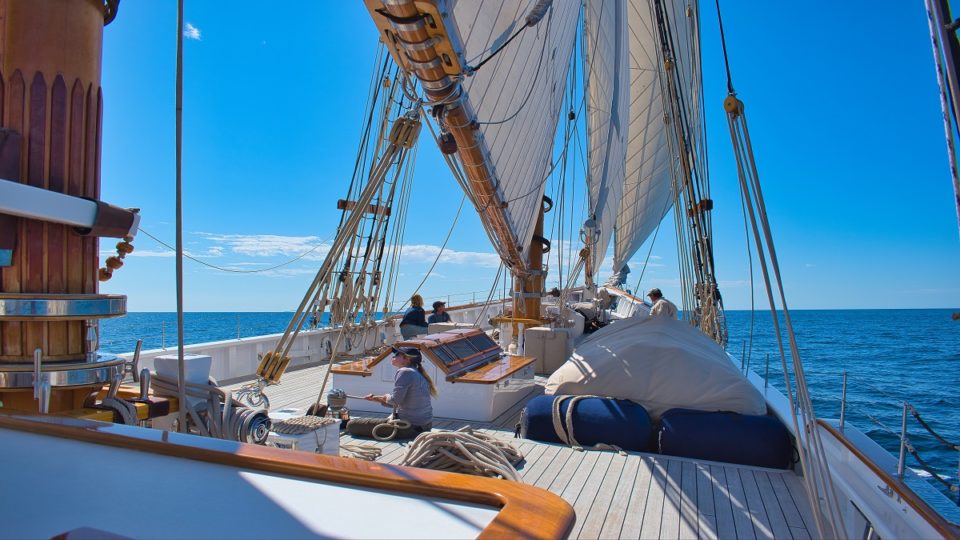
If you choose to do your transatlantic crossing with a rally or race, you’ll have to meet a stringent list of required equipment and safety checks. That’s easier because you have the lists right in front of you, and a team of inspectors to check your work. Preparing for a crossing with just one boat, the captain has to take all the responsibility and know what to check.
Sailing across the Atlantic is a serious undertaking, and you will sail out of range of shore-based rescue and into rapidly changing and possibly severe weather systems. You will have several thousand miles of nonstop sailing and may be at sea for several weeks.
What you must have
Any boat sailing across the Atlantic needs solid construction and a sound rig, a reliable auxiliary engine, and enough stores for food and water for the crew. That’s a bare minimum. Every boat needs to be checked from stem to stern to make sure systems are reliable, many older boats can certainly make this trip, and not every new boat is suitable.
Some tiny boats have crossed the Atlantic, so minimum size isn’t a requirement. What successful boats have in common is a solid hull and rig, with reliable sails and systems.
Most transatlantic yachts have a lot more
You can cross the oceans with a lightly equipped boat with few conveniences or extra safety gear, but most do not. A few things to look for on your boat include:
- An EPIRB satellite rescue beacon .
- Long range communication devices, such as satellite phones and single sideband radios.
- Certified life raft with space for all crew on board.
- Storm sails
- Storm safety gear such as drogues or sea anchors.
- Access to up-to-date weather forecasts and reports.
Do not head offshore without these
The list of required equipment for races and rallies is exhaustive, and many of the requirements are exacting and expensive. No one is enforcing compliance when you sail on your own. But there are a few things you should not head offshore without.
- A reliable auxiliary engine. If the wind dies and you need to dodge bad weather, this can be a lifesaver.
- Access to good, current weather information.
- Reliable sails. Have all sails inspected by a sailmaker for wear and damage before setting out.
- A life raft. If you run into serious problems and lose your boat, this is your last hope for rescue.
- Spare parts and tools for common repairs.
Read also: 10 Sailing Myths And Bad Advice You Shouldn’t Listen To
What experience do you need to do a transatlantic?
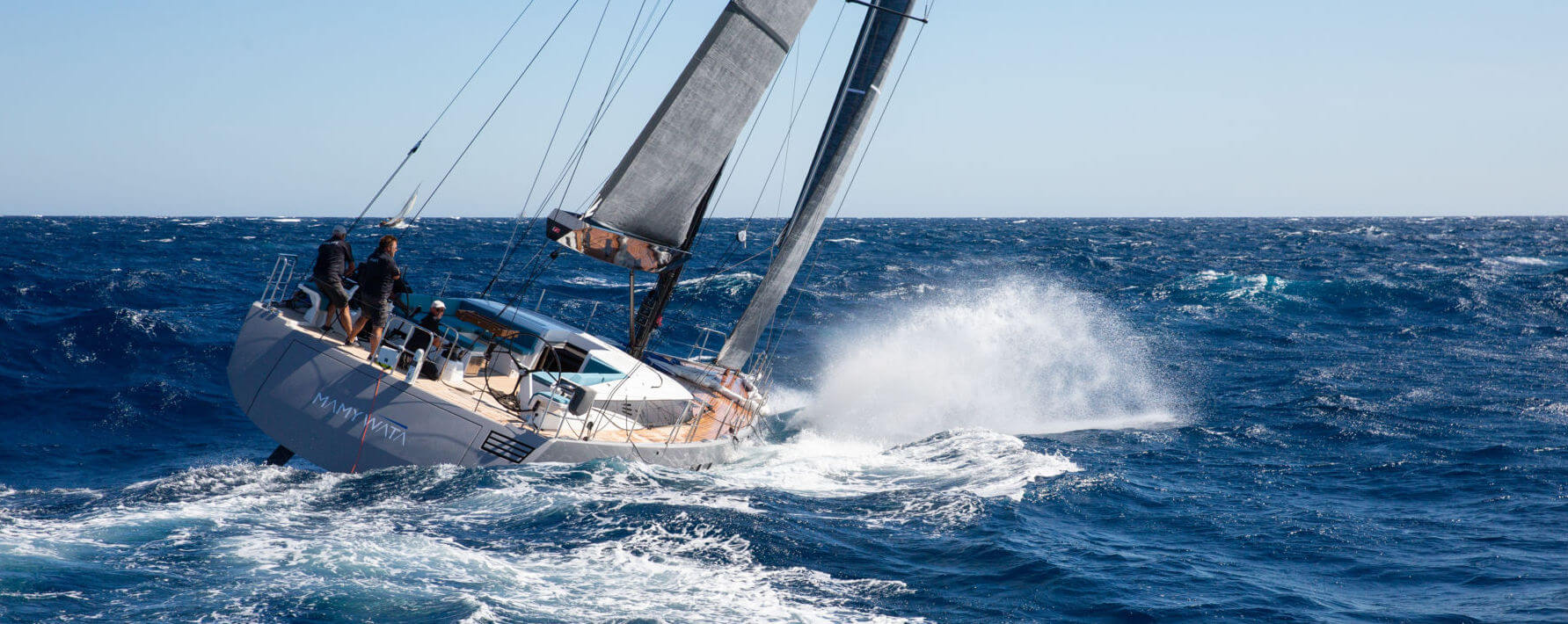
A transatlantic crossing is a major sailing milestone for experienced sailors. The north Atlantic is no place for new sailors and beginners, unless they’re with competent and experienced crew or a qualified captain.
If you’re thinking of a transatlantic crossing on your own, you’ll need experience with multi-day, nonstop passages. Sailing offshore is twenty-four hours a day and nonstop, there’s no place to park. Experience with night sailing, standing watches, navigation, provisioning, and basic engine and system troubleshooting are all a must.
Read also: Five Easy Beginners-Friendly Sailing Trips And Destinations
Chartering a yacht – a great option for less experienced sailors.
Charter fleets make seasonal moves from Europe to the Caribbean are an excellent way to get offshore sailing experience. Charter companies provide a captain and first mate, but you can reserve a spot and fill the roles of a full crew member, standing watch and sailing far offshore.
Many boats are also available for charter in cruising rallies, races, and deliveries. You’ll need to hire a captain with the needed offshore experience, but you may come away with enough experience to skipper your own yacht the next time.
The best yachts for a transatlantic crossing
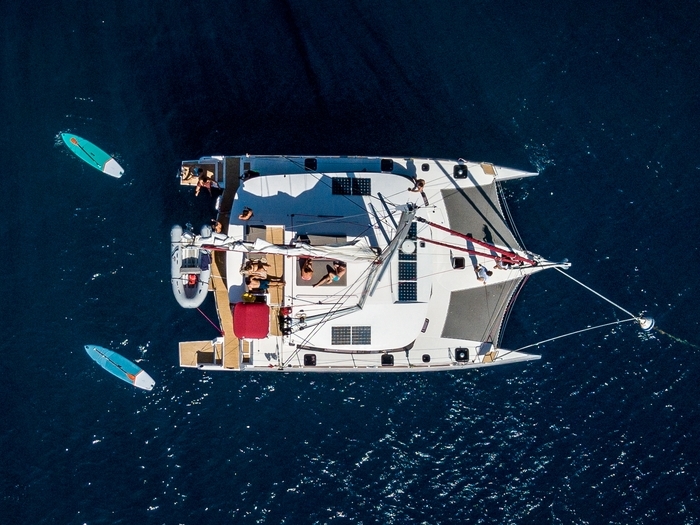
There are many yachts which are suitable for a transatlantic passage. Some will be less expensive, some will be more comfortable, faster, or better suited to you, your experience, and your budget.
NEEL 51: Fast and easy to sail trimaran
The NEEL 51 is a fast, comfortable trimaran suited to a smaller crew. It’s spacious, but easy to handle while putting up double digit speeds and 200+ mile days. Trimarans can be a little more sea-kindly in waves and chop than catamarans, and don’t heel hard like monohulls. A protected helm station gives great protection offshore and good visibility, and there space on board for plenty of crew and guests.
The racing version of the NEEL 51 is built with lighter materials, and features a larger rig to project more sail area for more speed, while still affording the same luxury and comfort at anchor.
More info about our Neel 51 available for charter
Outremer 5X: High-speed catamaran sailing
The Outremer 5X offers top tier performance and comfort in a single passage. Sustaining double digit speeds with east, the Outremer 5X is one of the fastest cruising catamarans on the market. Outremer is known for both performance and quality, and your transatlantic trip will be fast and safe.
With four different helm stations, she’s a sailing boat foremost. It’s designed for a small crew, even when tearing up the ocean on a fast passage. With options for three or four cabins and a cockpit that can fit a dozen people, she’ll be as comfortable when you arrive as she is fast on passage.
Hallberg-Rassy 57: Sturdy monohull with elegance and speed
Hallberg-Rassy builds tough cruising yachts, and the 57 is no exception. While monohulls don’t put up the blistering speeds you’ll find in multihulls, the Hallberg-Rassy 57 is no slouch and can log 200 mile days. Most offshore sailing and cruising is done in monohulls, and blue water sailors love their stability and seakindliness across all conditions.
The Hallberg-Rassy 57 has generous accommodations, and loads of capacity for gear supplies. The deck layout is clear, and lines and controls are laid out for easy use with a small crew. With a performance design by German Frers, the 57 sails well on all points of sail.
There are many choices for the best boat for you for a transatlantic crossing. No matter which boat you choose for your transatlantic and how you go – on your own, or on a charter – preparation is key. Your boat needs to be equipped with a full range of safety gear, and checked from top to bottom so you know your sails, hull, and engines will get you where you’re going.
Read also: The Caribbean To Mediterranean Sailing Routes: How To Cross The Atlantic Eastward
RELATED ARTICLES MORE FROM AUTHOR
6 great motoryachts just under 100 feet to consider, how to winterize your boat, sail the mediterranean onboard the custom line navetta 28 “yvonne”.
- Testimonials
- Privacy Policy
Call Us: +44 121 285 8010
Transatlantic crossing with a supercat 70ft Sunreef catamaran this November!
Published by Eldin Basic on July 13 th , 2022
Keen on the ultimate yachting adventure and once in a lifetime experience? We are pleased to recommend a NEW 2022 model fo SUNREEF 70 ready for the transatlantic crossing. With a top captain, full gear and all inclusive service, you can cross the Atlantic in luxury …

Only a few years ago, crossing the Atlantic was an adventure for only a few hardcore sailors. To do so, you would have to have thousands of miles of skippering or crewing experience and choice of boats was usually limited to monohulls from 40-50ft and a couple of top racing boats up to 80ft. Moving forward, a huge number of multihulls was introduced in 00’s and in particular during 2010’s, when fleets turned the corner and introduced higher number of catamarans into their Caribbean ports for the first time in history. This brought higher number of both experienced and those with limited experience sailors on board, all keen to experience ARC and ARC+ racing for the first or second time.

Some of them and others are now coming back keen to experience the crossing of the Atlantic on a luxury boat however. Gone are the days when some were happy and ready to literally ‘’risk their lives’’ doing the night watch or sailing with inexperienced captains and crew members. As a result, we are now offering transatlantic crossings not only on smaller bareboat catamarans, bigger skippered ones or those with crew, but the as an ultimate luxury crewed charter or superyacht charter adventure. With fully inclusive service, top of the range yachts including monohulls from 60-125ft and catamarans from 60-145ft, you can cross the pond being served by top crew, enjoy sunbathing or book reading on deck and relax in the knowledge that fine dining and carefully chosen wines will be on board and served when required. One of those yachts is this superbly equipped top of the range Sunreef Yachts 70ft sailing catamaran. Book her now from 100,000 – 125,000 Eur for a 5 week adventure crossing the Atlantic from Gran Canaria to Martinique. You could also extend the experience and request a one week stopover in Cape Verde or start in the Mediterranean 2-3 weeks before. For final pricing and a list of what’s included, do get in touch in order to receive a full quote.
Highlights of NEW Sunreef 70 (2022):
- Owner version with 1 master suite and 3 VIP guest staterooms - Superb 1 million Eur extra equipment on board - NEW but experienced crew on board - Flexible itineraries in both East and West Med - Christmas and NEW YEAR 2022/23 bookings possible in the Caribbean - Charter rates from only 50,000 Eur/week plus any VAT and APA - MYBA terms apply in most cases - Long-term charters and Transatlantic Crossing deals available
Photos courtesy of Sunreef Yachts – Originals available in 2022

Nothing less than spectacular you can expect when choosing which water toys to use. This amazing supersail catamaran will have all the latest gear on board and biggest and most luxurious superyacht tender on board that can be safely carried on the swim platform. You will in fact find even SeaBobs on board and on top of the usual suspects such as 2x SUP, an inflatable sea kayak, water skis, knee board, donut and snorkelling gear. Aermarine 420 jet tender with 40hp outboard will also take you safely to the shore when required. You can therefore enjoy both extensive exploration of the coastline with various water toys or luxury transfers in your best attire when required as apart from fine food served on board, you can also sample a few chosen restaurant offering along the sailing itinerary both on mainland Italy around Amalfi coast as well as on request in Sicily, Sardinia or even Corsica.

Your luxury cruise in the Mediterranean, or in particular within the Cote d’Azur or Greek Islands can therefore start this week already, with flexible payment options, including us accepting a range of cryptocoins such as BITCOIN or Ethereum, or standard old credit cards from VISA/MASTER to AMEX. Whatever your choice of payment or sailing week, you can rest assured that your private yacht charter with SuperSailYachts.com will be a success. Apart from the usual luxury yacht charters, should you wish to become an owner of a yacht, it’s worth knowing that we can also arrange commissioning of a new Benetti , Sunseeker, Azimut, Pershing or San Lorenzo motor yachts, thus if you are keen to buy a new or 2nd hand superyacht, please do contact us to forward specifications, arrange viewings and commission surveys. As exclusive dealers for PUCCINI YACHTS and UK broker for VAAN, Aquila and Sunreef Catamarans we do specialise in bespoke orders of new motor yachts as well as sailing catamarans, power catamarans and traditional Turkish gullets which range from 23,9 – 50m and start in price from 880,000 Eur with 12 months delivery. NEW Eco models with HYBRID engines or even solar powered boats are available. #supersailyachts WhatsApp (00447792052007)
In case you are interested in chartering one of these or similar yachts or wish to consider purchasing one of the models which are offered for sale, do let us know by filling out the CHARTER REQUEST FORM or send us an email to [email protected] now.
Disclaimer: The information provided here are made as a general guide only, made to give a broad description and latest news of the shown yacht or yachts. They are not intended to constitute part of an offer or contract. The details of the luxury yacht or yachts displayed on this page are made merely for informational purposes, and the yacht or the yachts are not necessarily available for yacht charter or for sale, nor is she or they represented or marketed in anyway by SuperSailYachts.com. All details, including any photographs, measurements, plans and specifications mentioned, are given as a guide only and should not be relied upon for the purchase or charter of this yacht. The copyright of all details, photographs and deckplans remains the property of their rightful owners or their chosen representatives.
This news refers to:

Italian lifestyle at its best with Southern Wind 82 supersailyacht!

Looking to charter best Lagoon Seventy 7 there is? Look no further!


Superyacht charter on BENETTI VISION 145 with 20% discount in Greece!

NEW Lagoon 65 catamaran charters in the Balearic islands!

An Italian designed superyacht cruises the Turkish Mediterranean!

Belgian property company chartered a luxury sailing yacht XNOI during the prestigious Cannes event MIPIM in March 2015. They stated the lovely XNOI was even better than they expected and this spectacular yacht with the fabulous captain Marco made all the difference. Their event proved successful even if the allocated choice of berth did not serve the purpose in the best possible way. The successful charter is likely to be repeated within 12 months.
- Yacht Charter
- Destinations
- Giga yachts
- Super yachts
- Mega yachts
- Sailing yachts
- Power boats
- testimonials-17"> Testimonials
- Useful links
- Privacy Policy
- Legal Notices & Terms

Thank you, Your request has been sent!
Please fill up the form:
| Contact Name/s: | |
| E-mail Address: | |
| Phone No's: | |
| Evening Phone No's: | |
| Home address: | |
| Company Name: | |
| Company Address: | |
| Your Budget: | |
| Embarkation Date: | |
| Length of charter: | |
| Special Requests: | |
Charter Requests Form
Personal Info:
| Contact Name/s: | |
| E-mail Address: | |
| Day Phone No's: | |
| Evening Phone No's: | |
| Mobile Phone No's: | |
| Home Address: | |
| Company Name: | |
| Company Address: |
Please specify your request:
| Yacht Type: | |
| Your Daily Budget: | |
| Charter Destination: | |
| Number of Adults: | |
| Number of Children: | |
| Number of Double Cabins: | |
| Number of Sinlge Cabins: | |
| Embarkation Date: | |
| Length of Charter: | |
| Special Requirements: | |
Preparing to cross the Atlantic
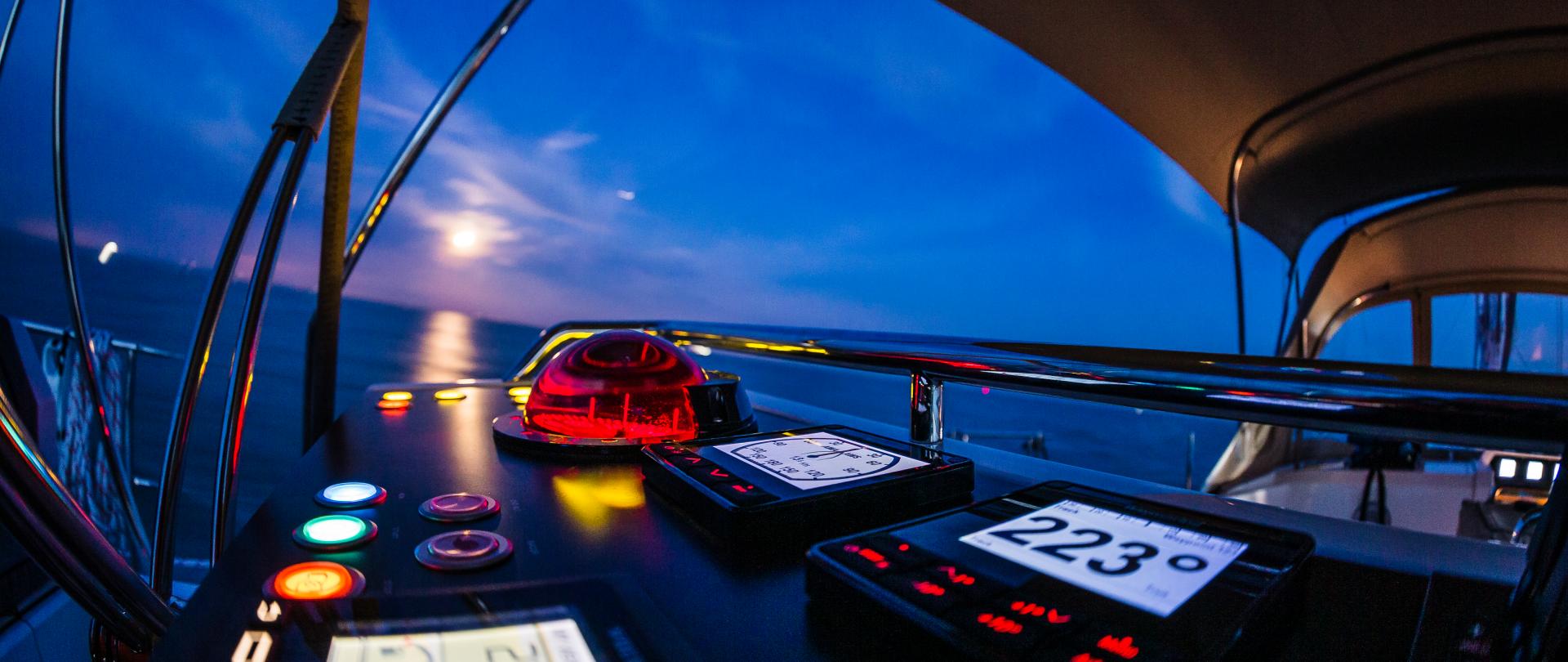
We always encourage the Oyster Family to explore and achieve new sailing experiences. And completing an Atlantic crossing is the dream of many a sailor. But the sea can be a formidable mistress so it pays to prepare well, making sure everything is ship shape before a longer ocean passage, right down to the last sail tie. Oyster Crew member Leandra Sewell details how she and her crewmates prepare for an Atlantic crossing aboard their Oyster Yacht.
PROVISIONING
I don’t need to explain why taking the right foods for a longer sailing trip is so important, but here is a quick guide to the provisions we take:
- The number one rule is to take foods that will keep for a long time. Dry store goods – tinned foods, pasta sauce, cup-a-soups, crackers, tea, coffee, cereals, bread flour, long-life milk and water; not forgetting easy to grab snacks such as nuts, dried fruit, cereal bars, chocolates, biscuits, crisps. Baking ingredients let you cook on the move, and who doesn’t love finishing a night watch to the smell of freshly baked bread?
- Fresh fruit and vegetables that keep well and can be kept out the fridge for a long period are important. Apples, oranges, pears, grapefruit, unripened avocados, unripened bananas, pineapple, mango, watermelon, carrots, corn, potatoes, onions, pumpkin, celery and peppers all fall into this list. When planning meals, it’s important to work around when this produce will start to go off so nothing is wasted.
- Frozen foods are great too, so fresh produce is available throughout the passage. We take frozen vegetables, frozen berries and other fruit that can be thrown in a smoothie. Meat and ready-made pizzas are good and bread can also be frozen and toasted easily.
- Don’t forget – anti-seasickness provisions like ginger biscuits, ginger and peppermint teas, and mints are essential, although hopefully not necessary!
FOOD PREPARATION
Our chef will prepare three meals a day for seven people for +/- 16 days, which is the average time it takes us to sail across the Atlantic. Below are some handy hints from how our chef does this:
- Fruit and vegetables are cut up, portioned and frozen for future use.
- Some dishes are made in advance and frozen – these include lasagne, pies, stews, curries, chilli and soups.
- Wrap fresh herbs and leaves in damp paper towels to make them last longer.
- Home-made dips like hummus are preprepared and we continue to prepare foods like this as we sail.
SAFETY DRILLS
It is important everyone knows their responsibilities in case of an emergency. So we run through all our safety checks and drills to pick up anything that might be amiss before we leave.
- Life jackets must be checked for wear and tear.
- Locations of safety equipment are identified and we remove all the covers and run through how everything works.
- We test the alarms and emergency exits.
- We do a full run through of fire, man overboard and abandon ship drills.
MECHANICAL CHECKS
- We test all the alarms including fire and bilge alarms.
- Start up the generators and engine to make sure they run smoothly.
- Winches and hydraulics are all tested.
- Service intervals on machinery are checked.
- The bow and stern thrusters are tested to ensure a smooth take off once we slip the lines.
DECK CHECKS
Not only do we have the fishing rods ready to supplement our diet with fresh and sustainably caught fish, but we also needed to check the following:
- the jack-stays have been set up and tested to ensure they are tight.
- winches have been set up with the correct lines.
- the stainless steel is polished to protect it from the salt water and do a final wash down.
- all hatches are stowed and locked close, ready to go to sea!
Want to get a feel for the Atlantic Crossing experience?
READ THE ATLANTIC CROSSING BLOG >
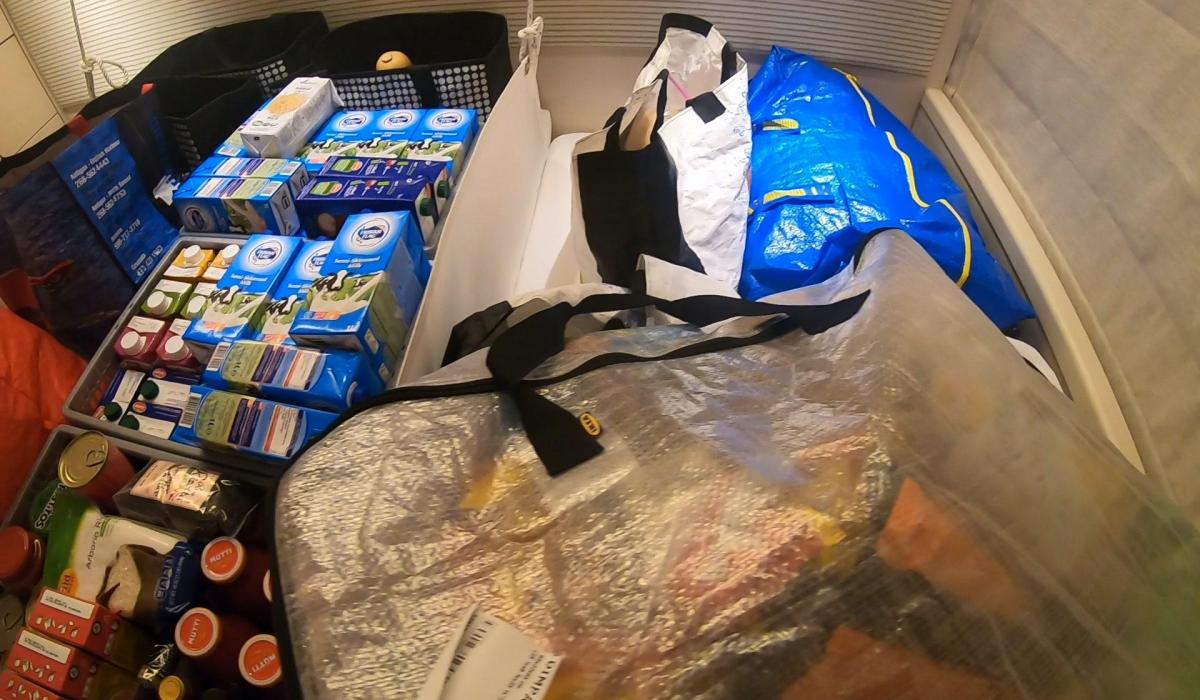
Sign up to our newsletter
Be the first to hear about new launches, exclusive events and all things Oyster
© 2024 OYSTER YACHTS
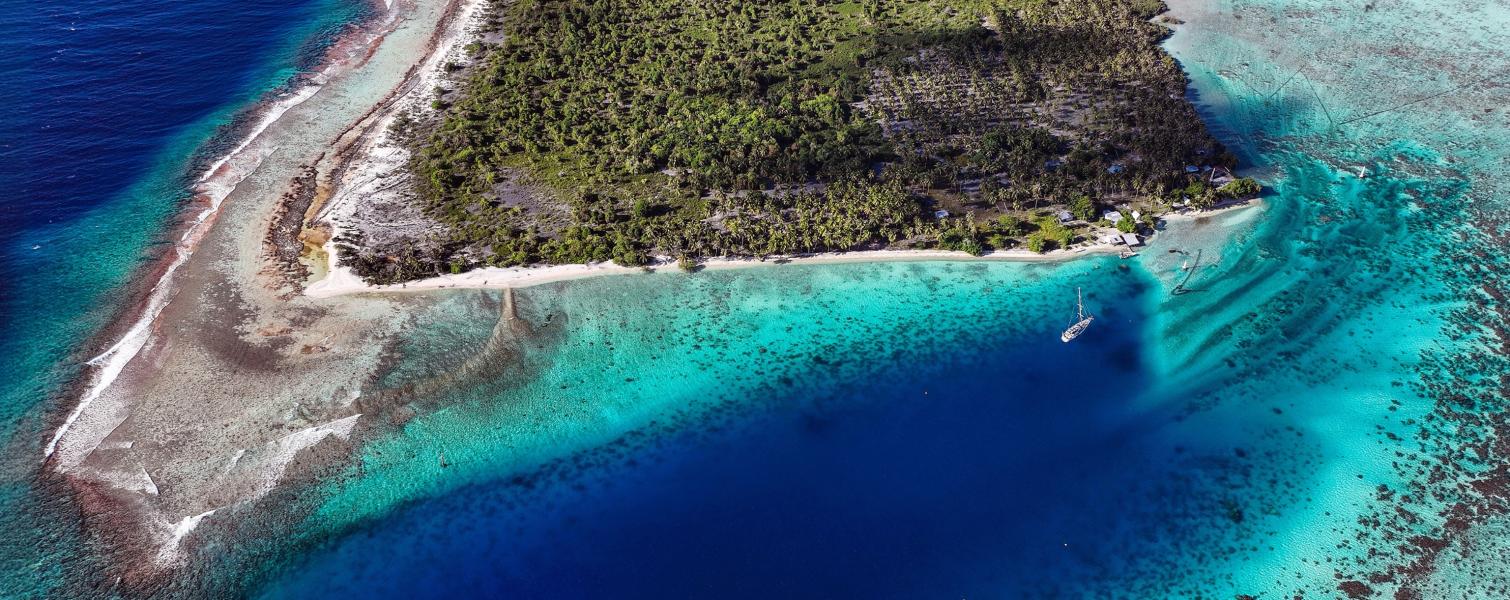
OYSTER WORLD RALLY
Entries for the Oyster World Rally 2028-29 are now open. Embark on the sailing adventure of a lifetime
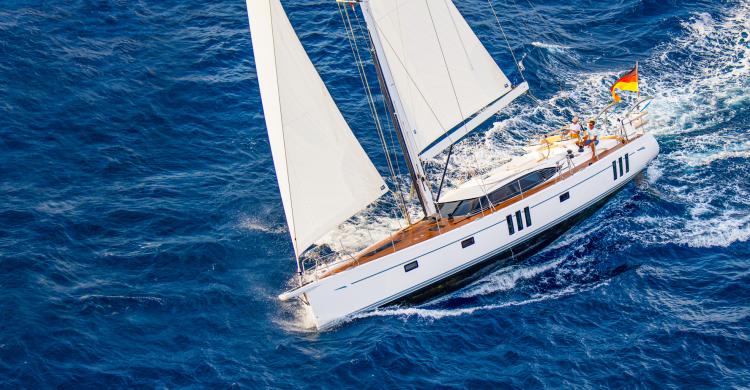
The new 565 Series II
The pursuit of perfection continues
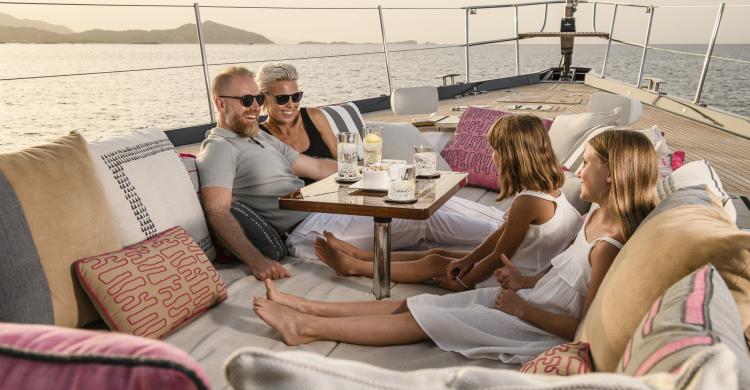
Oyster Charter
Experience exhilarating sailing, luxury and style on an Oyster charter

New 565 Series II
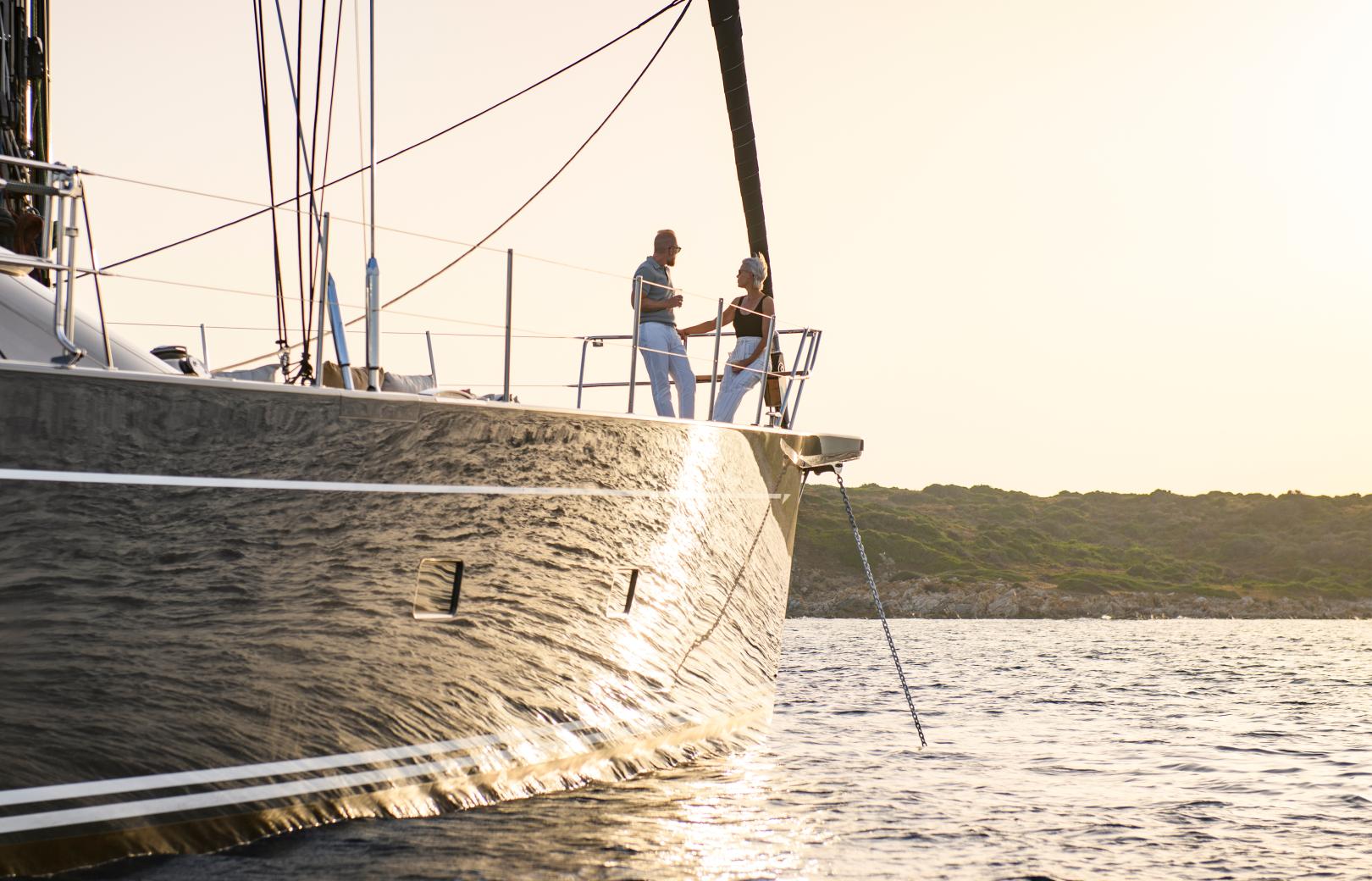
LUXURY CHARTER
Experience exhilarating sailing, luxury and style on an oyster charter. personal, exclusive and uniquely oyster.
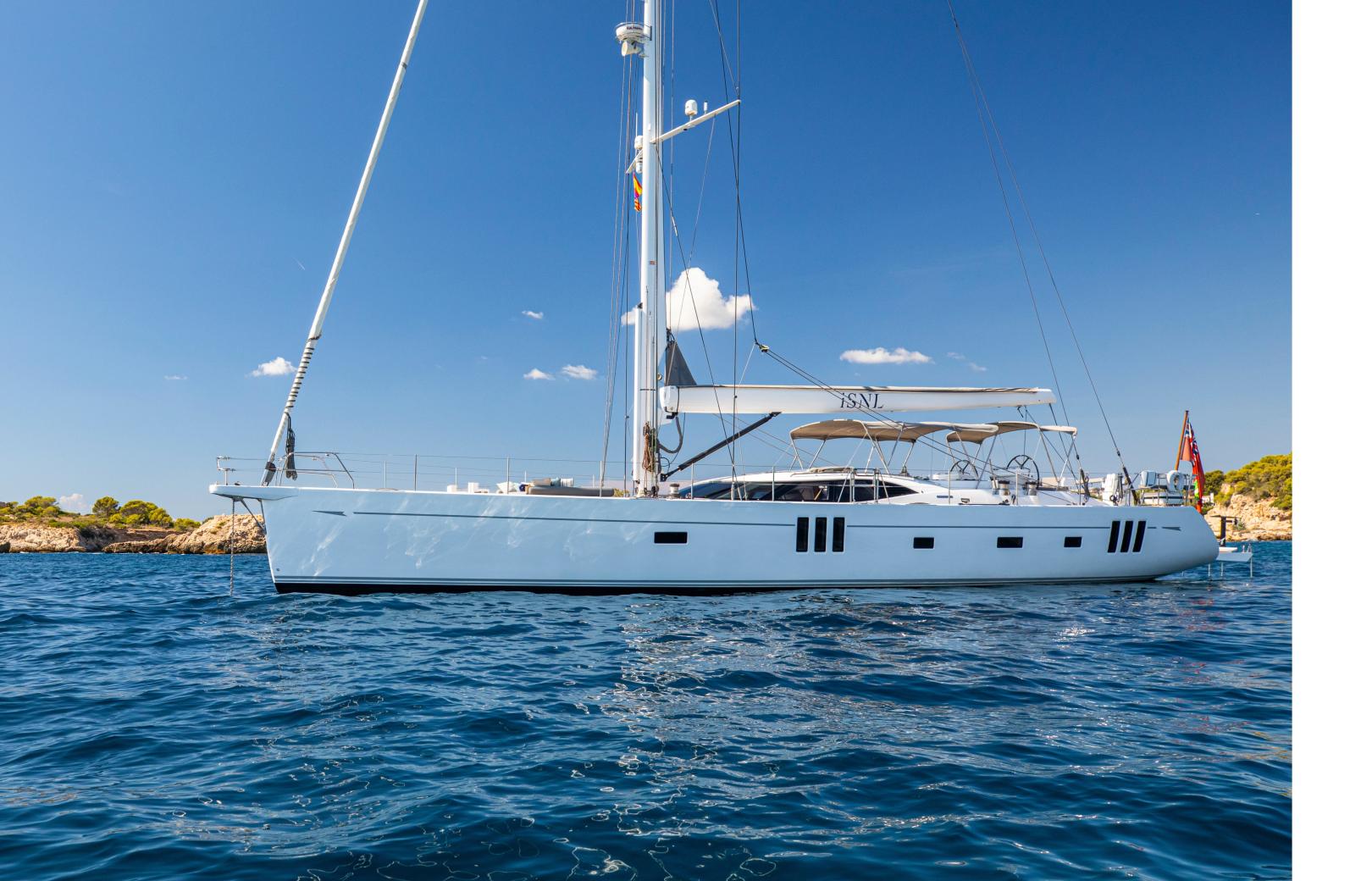
Oyster 825 iSNL
Discover this exceptional late model 825 with a unbeatable spec and a bespoke layout.
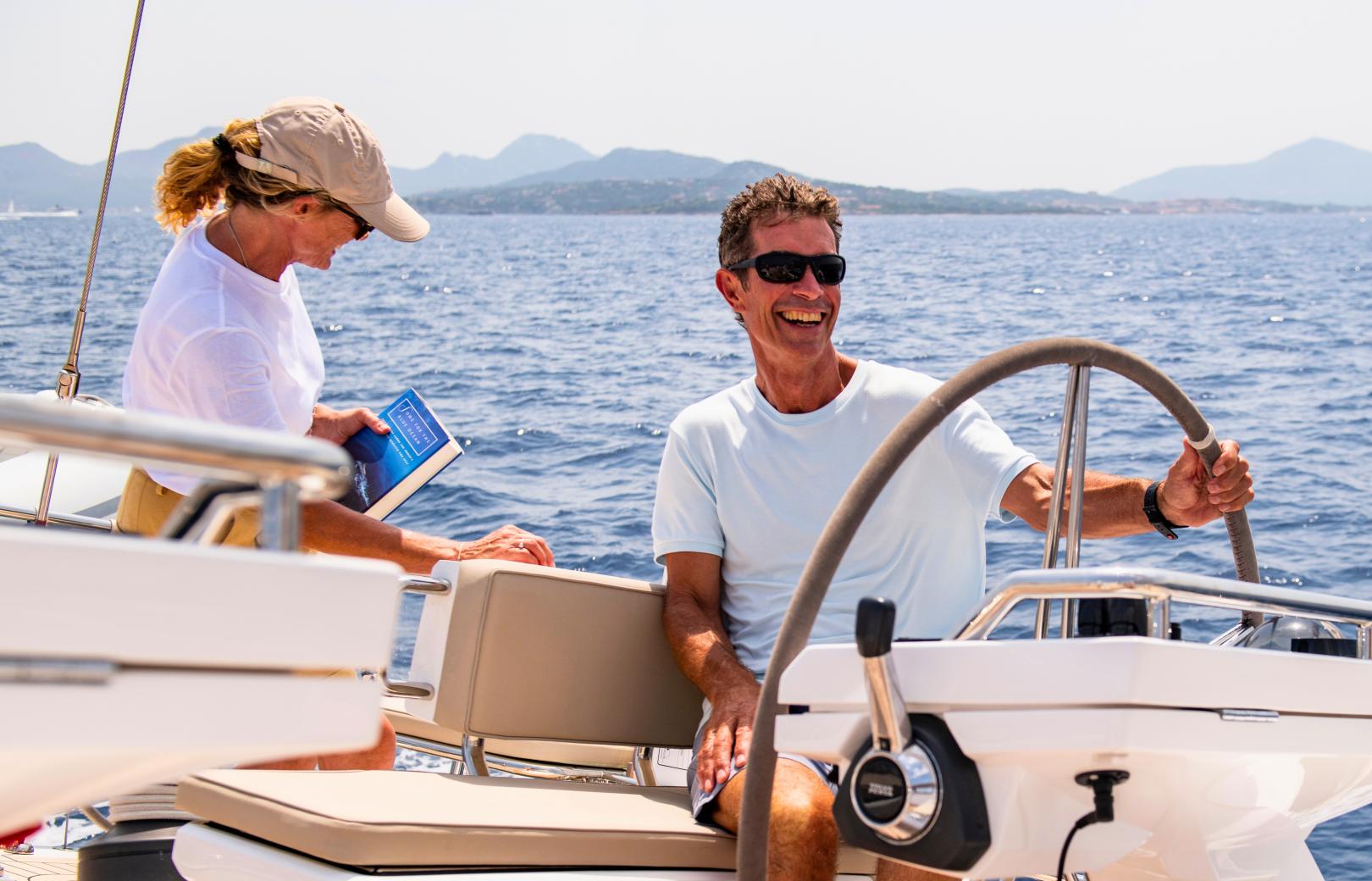
oyster ownership
Personalised care, unforgettable experiences and lifelong yacht support, oyster world rally.
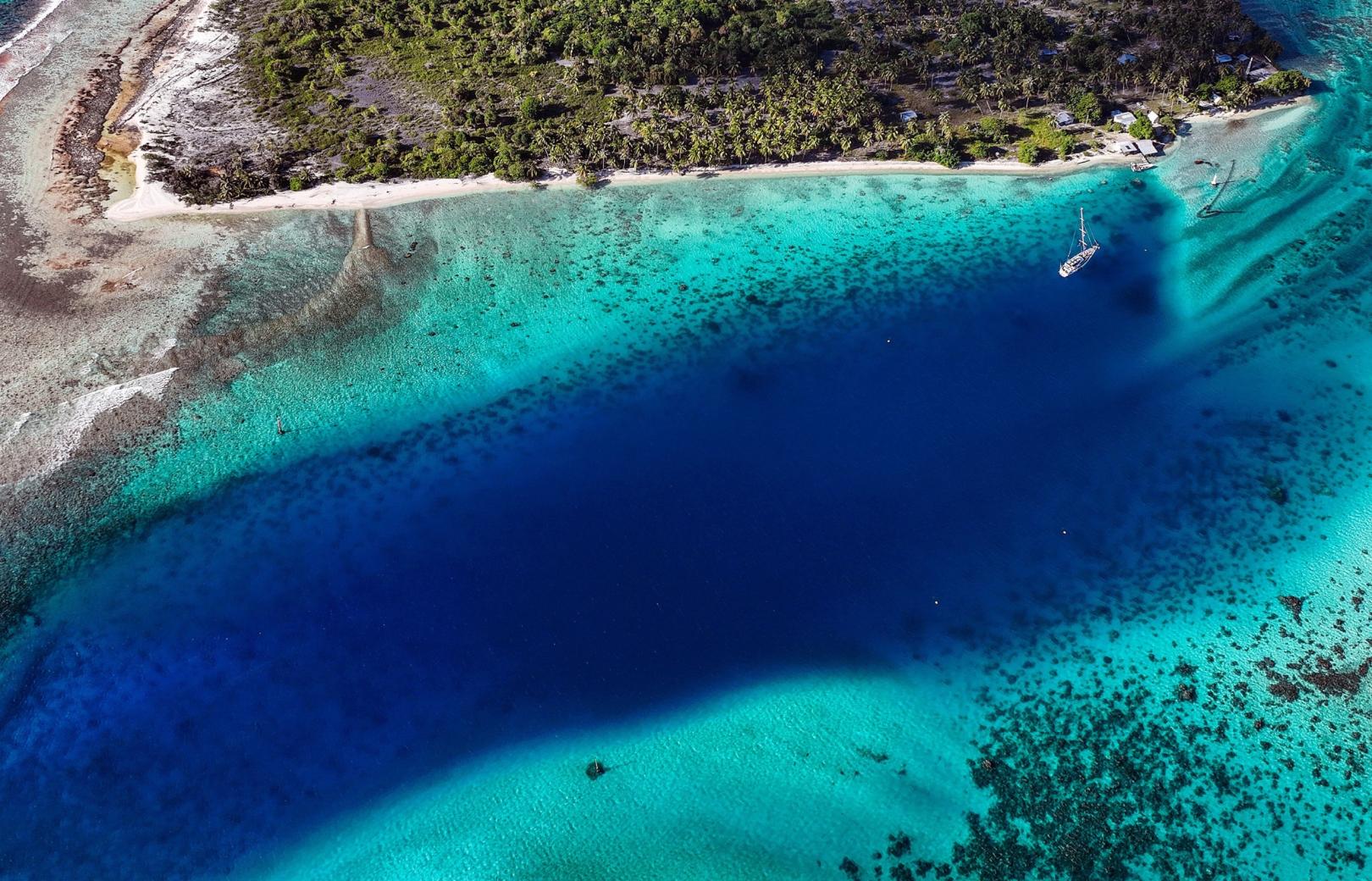
ENTRIES OPEN
Embark on the sailing adventure of a lifetime. entries are now open for the oyster world rally 2028-29.

Follow the Oyster World Rally 2024-25 fleet live
Winner of European Yacht of the Year 2023. She is a new breed of luxury 50 foot yacht, offering effortless shorthanded sailing capability.
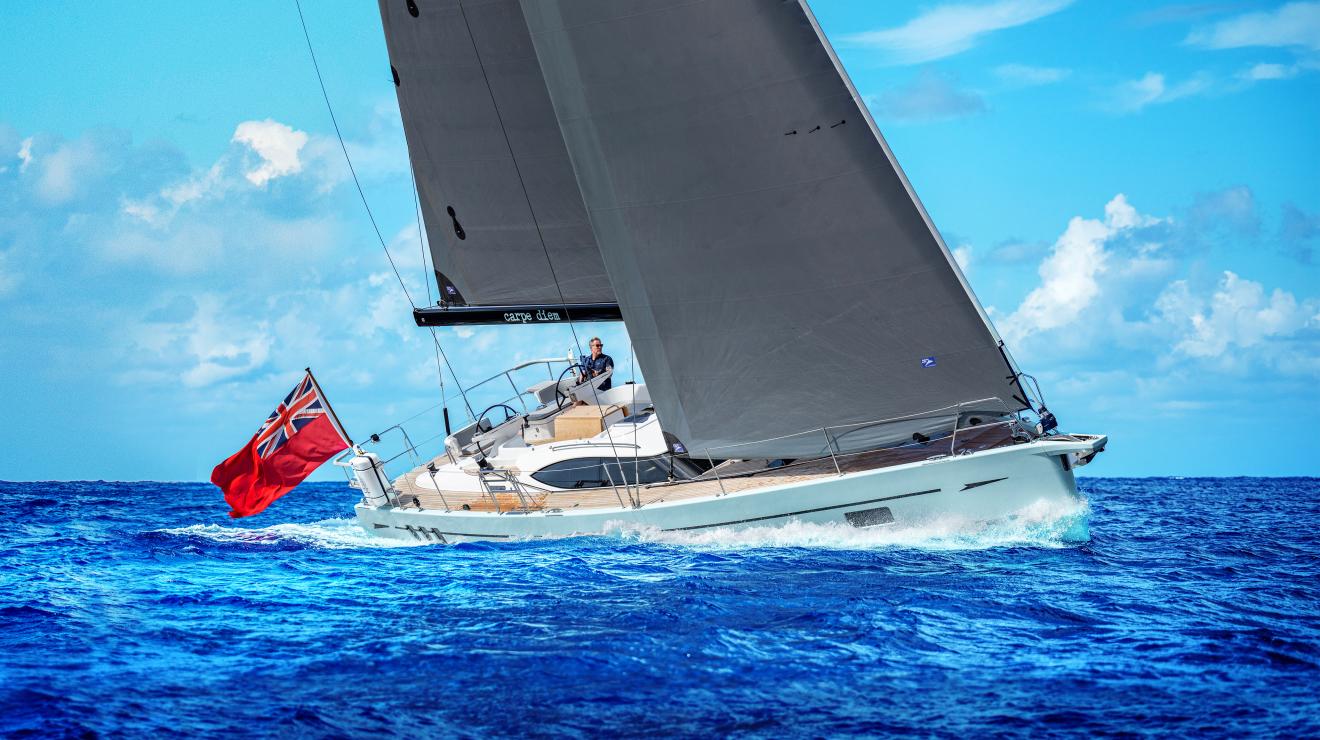
A magnificent, award-winning sub 60 foot sailing yacht, offering luxurious living space and outstanding shorthanded sailing capability.
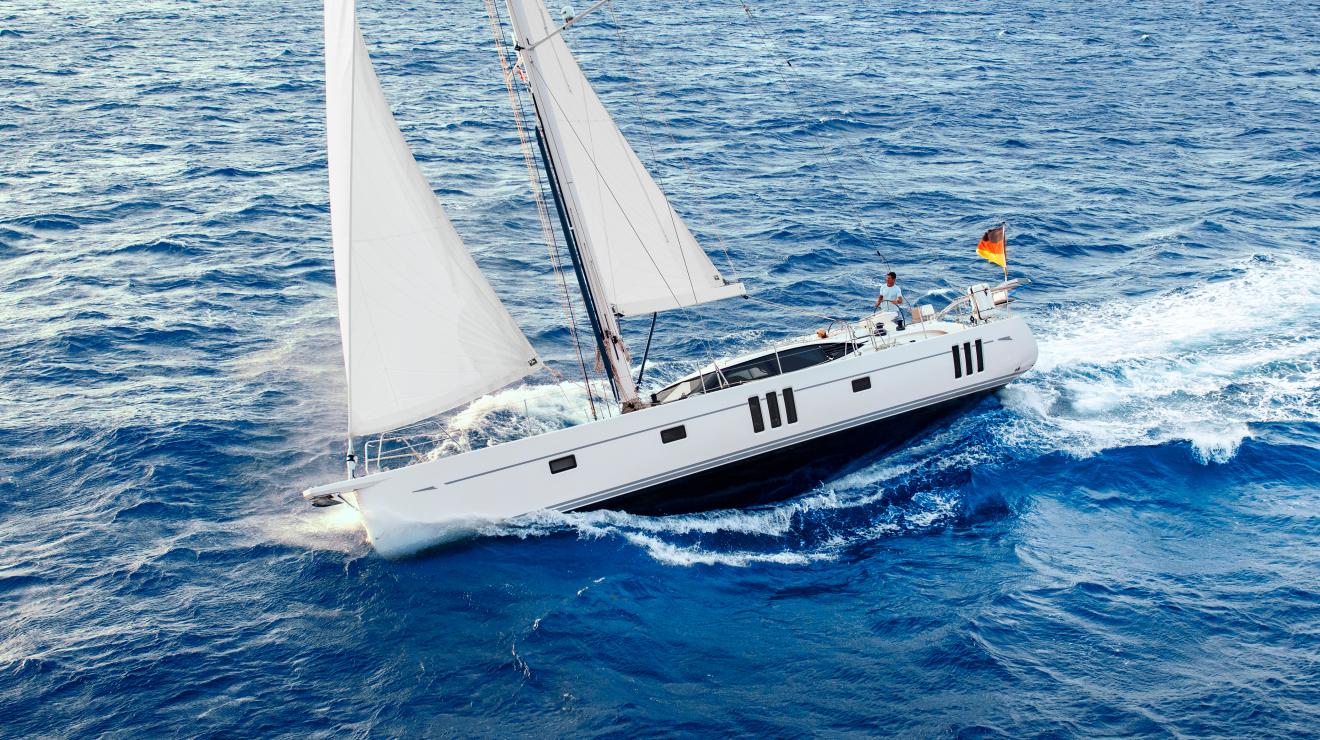
A beautifully proportioned 60 foot, luxury liveaboard bluewater cruiser, offering effortless shorthanded sailing capability.
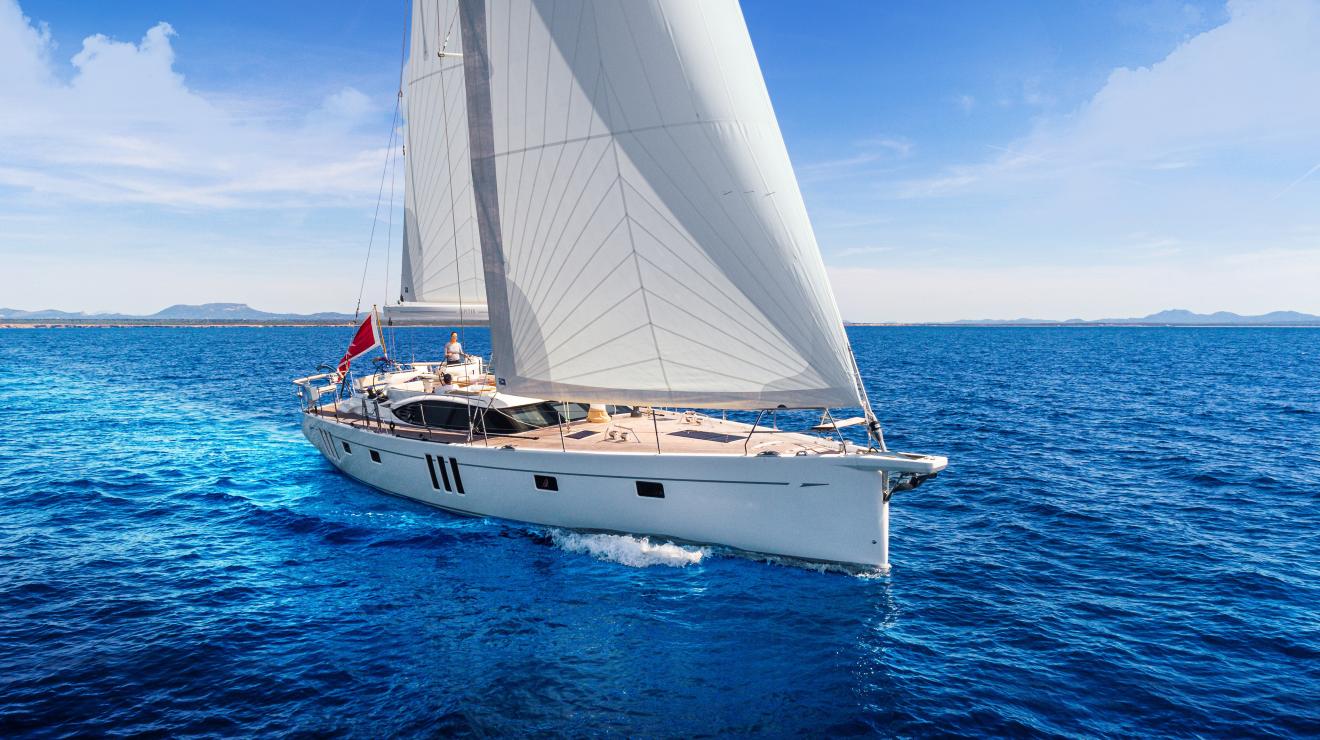
A superb sub 70 foot ocean sailboat offering versatile luxury living space and impeccable sailing performance.
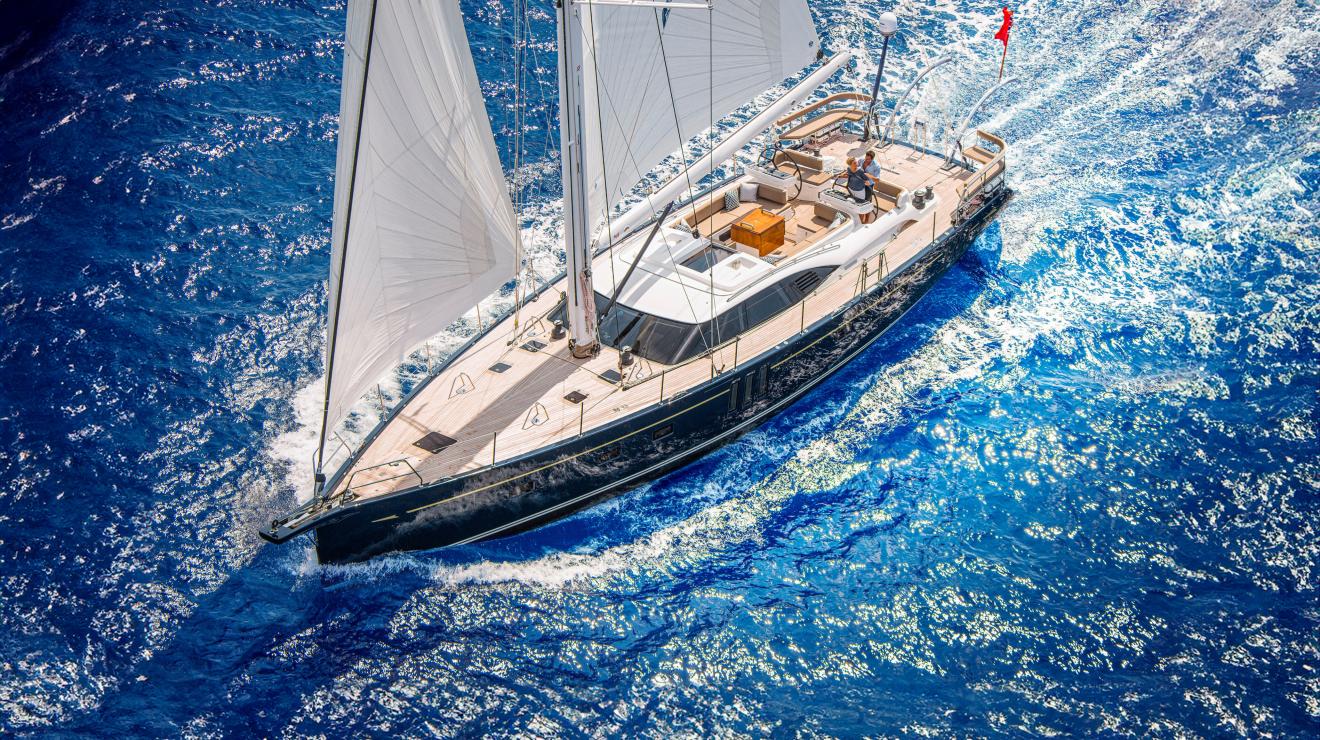
An inspired 75 foot yacht, offering infinite configuration options, generous luxury living space and flexible crew quarters.
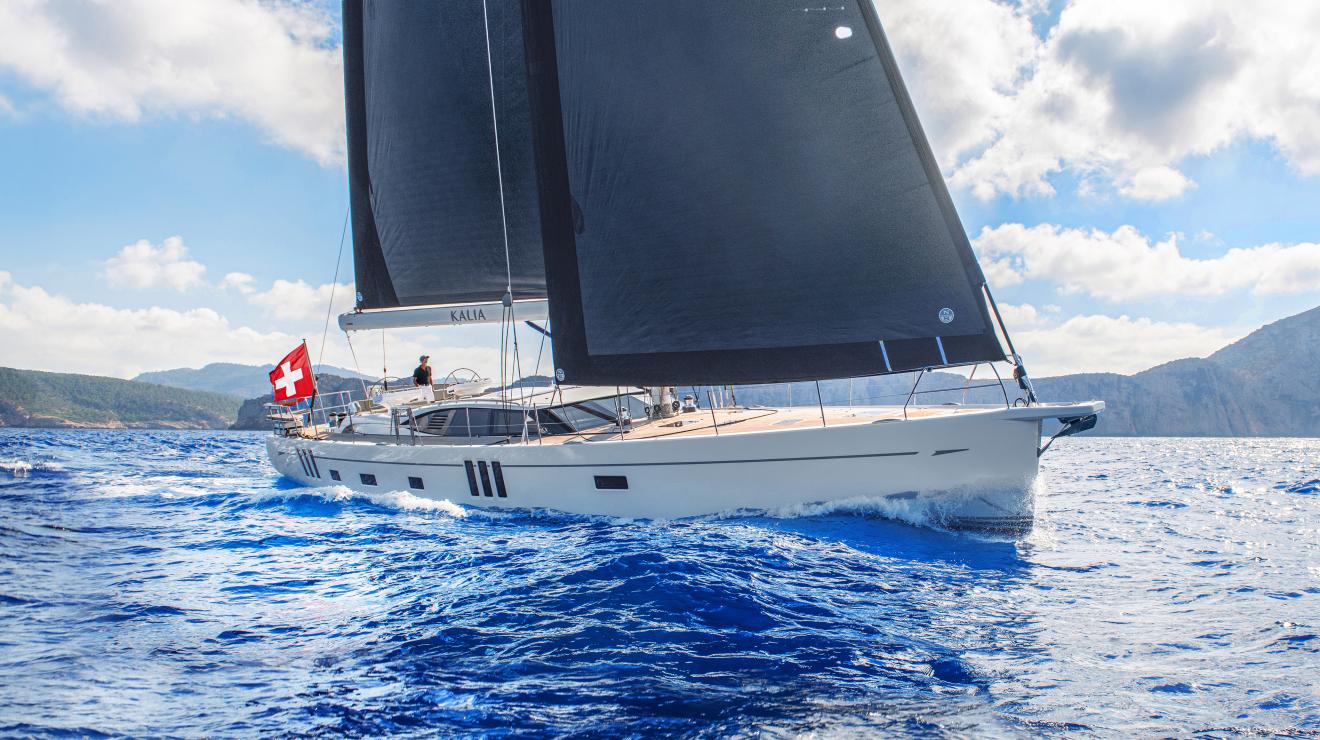
Oyster 885SII
The remarkable, iconic 90 foot sailboat, perfect for relaxed luxury voyages of discovery.
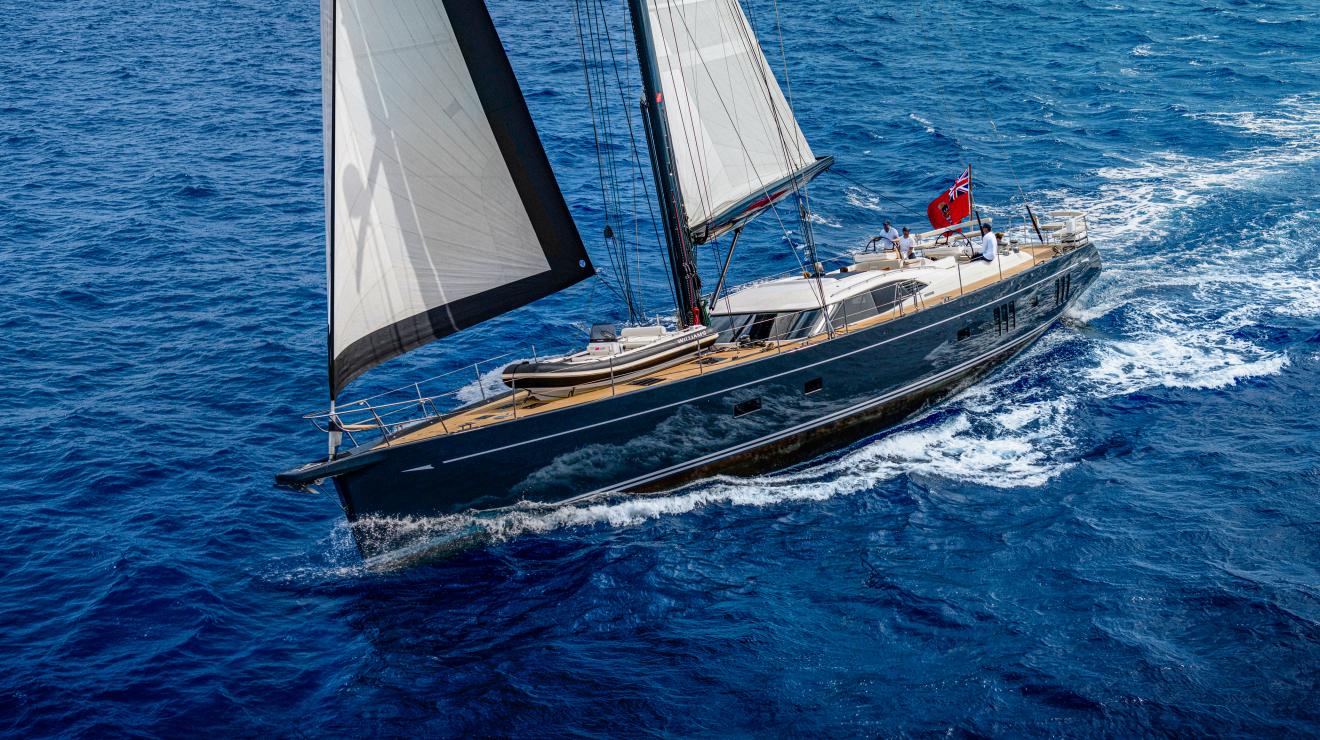
First name *
Last name *
Phone number *
Country/Region *
Attach CV *
Attach covering letter
Current occupation
LinkedIn profile
Yachting Monthly
- Digital edition

How to sail across the Atlantic and back
- Elaine Bunting
- March 8, 2021
Confined to quarters during the pandemic, many sailors are itching to slip their lines and sail for the sun. Elaine Bunting explains exactly how to break free and sail across the Atlantic and back

If your dream is sailing off into the sunset, making it a reality could be easier than you think
Just as the island of Hiddensee drew across the wake of the boat, Malin Andersson took up her camera and shot a video, writes Elaine Bunting .
When she looks at it now, a late summer scene from the Baltic coast of Germany, she remembers it as the instant she knew for certain she was right to think of leaving work to go cruising.
Malin and her partner Kaj Maass, both from Sweden and aged in their late twenties, met as students and formed a plan to take a year off before starting a family.
After years of scrimping, they bought a Bavaria 38 and renamed her Cross Ocean .
With the last tiny island of a summer cruise behind them, they began to prepare to sail across the Atlantic and back, and a year of adventure.
‘From then, we have never had a moment of regret about setting off,’ she says.
Each year, hundreds of yachtsmen of all ages sail across the Atlantic.
Some have only a few months of freedom, others plan to cruise indefinitely.
Their ambitions shape diverse choices in terms of boat design and preparations.
Here, we look at some of the biggest considerations if that is your goal, too.
What’s the right boat to sail across the Atlantic?
A good place to start might be with the question: can I sail across the Atlantic and back in the yacht I have now?
In most cases, the answer is yes.
Almost any well-prepared yacht of 30ft and upwards can tackle the downwind crossing, and indeed there is no reason why an even smaller boat can’t do it successfully.
People have crossed in Folkboats; the legendary American sailor Webb Chiles sailed across the Pacific in a converted 24ft dayboat, and some masochistic adventurers have crossed oceans in micro yachts not even long enough for them to stretch out in.
Two sailors I have repeatedly met over the years are Swedes Pekka and Barbro Karlsson.
They first crossed the Atlantic in 1986 in their 32ft Arvid Lauren-designed double-ender, Corona AQ .

Pekka and Barbo Karisson have sailed their 32ft double ender across the Atlantic multiple times over 30 years. Credit: World Cruising Club
Over the last 30 years, they have made multiple crossings back and forth, observing boats getting ever larger, even of the same LOA as theirs.
By comparison, theirs is dwarfed in every dimension, including beam and freeboard, yet it has everything this experienced couple need for living on board for six or more months every year.
So, really, it is a matter of cost, preference and expectation.
The big question is whether your current yacht is the best tool for the job given your budget.
Is it large enough for the crew you intend for longer passages, for the provisions, fuel and water?
A 35-footer might take 25-28 days to sail across the Atlantic from the Canaries to the West Indies.
Obviously, the longer and faster your boat is, the more stowage and water tankage you will have for less time at sea.
You might also ask yourself which parts of the adventure are the most valuable to you.

A solid yacht set up for bluewater cruising is a good option and can be sold once you return home. Credit: Tor Johnson
If you don’t intend to do the more arduous return home to Europe, maybe you don’t need a bigger, more expensive, more complex long-legged bluewater cruiser; you could consider shipping back – more on that option later.
If you intend to live on board for longer, then perhaps you will want more space, including for guests, greater comforts and faster passage times.
In that case, one solution might be to buy for the duration of the project a second-hand bluewater cruiser already well kitted out with the right gear, then sell her right afterwards.
‘I think that makes total sense,’ says Sue Grant, managing director of Berthon International, the well-known brokers specialising in bluewater cruisers.
‘The best thing you can do for a North Atlantic circuit is to buy from the guy who had the dream, had the money and didn’t go. A refit will always cost you more than you think.’
For a two- to three-season transocean cruise, Grant advocates stretching up to your next level, especially to a yacht that doesn’t need a big refit and brands with a strong residual value.
‘If you buy a high-quality Hallberg-Rassy or an Oyster then sell it you’d lose 10% of value but have three years for it.’
Buy a boat you will enjoy
While in the Azores in 2012 I met Stuart and Anne Letton, who were sailing their Island Packet 45, Time Bandit , back to the UK.
Their boat was brimming with sensible ideas for living aboard and I have kept in touch with them over the years as they are a wonderful source of thoughtful advice.
Since then they have sold the Island Packet , bought an Outremer 51 catamaran, sailed across the Atlantic again, and are presently in Indonesia having sailed across the Pacific.
In total, they have now logged a very impressive 60,000 miles.

Catamarans are increasingly popular thanks to their speed and space. Credit: Stuart & Anne Letton
‘Before we went cruising, I spent a lot of time looking at what would be the best, safest mode of transport. I wanted a proven, tough, sturdy, bombproof ocean cruiser, hence Time Bandit [the Island Packet], the “Beige Battleship”,’ says Stuart.
‘Having spent my sailing career racing performance dinghies and keel boats, this was something of a departure for me. It was safe. And a bit boring. However, the reality is you all end up in the same place, give or take a few days. With reflection, though, I’d say, buy a boat that will make you happy, one that reflects your sailing style and capabilities. We opted for slow but safe and used the safe features a handful of days in 10 years. Those were years we could have been enjoying more rewarding sailing.
‘Buy what you will enjoy, can afford and are able to keep running. Do the maths on running costs, rig, insurance and repairs, and work that into the budget.’
Asked about their ideas of the ideal size for a couple, the Lettons comment: ‘Generally I’d say bigger is better, but the costs are exponential. Personally, for two up, I think around 40-45ft feet is a good size: big enough to be safe and comfortable, small enough to manage.’
Tips on how to sail across the Atlantic from Stuart & Anne Letton
The couple own the Outremer 51, Time Bandit and have completed four Atlantic crossings and sailed 60,000 miles

Stuart and Anne Letton.
‘Being very well set up for dead downwind sailing is important, especially well thought-out preventers, fore and aft on the spinnaker pole and main boom.
‘An asymmetric or spinnaker will keep you moving in lighter air.
‘Save on gas with a Thermal Cookpot and get as much free power from water and sun as you can.
‘Trade in your trusty CQR or Bruce anchor for a spade or similar “new technology” anchor .
Is a bigger boat better for crossing the Atlantic?
Like the Lettons, I think 40-45ft is something of a sweet spot, offering the volume and tankage required for longer cruising, yet still manageable by a small crew.
Bigger has its advantages, even up to 55ft (above that the loads become too large to handle manually and maintenance is a massive chore for a family crew, requiring significant time and budget).
The waterline length and extra speed will be your friend, most of the time.
Speed is your ally in evading bad weather, and if you are sailing to a schedule.

The Witt family sailed around the world as part of the World Cruising Club World ARC
Karsten Witt and his wife, Sheila, circumnavigated in the World ARC in their X-55 Gunvør XL , and he says: ‘It was hardest work for the smaller or slower boats. They are at sea longer, therefore experience more and sometimes harder weather, arrive later in port, get more tired and have less time to make repairs and bank downtime.
‘I would always go for a modern boat that’s faster,’ he adds.
‘If you had a heavy 40ft cruiser you would miss weather windows. Other boats spend days battling headwinds because they were doing 6-7 knots upwind and they couldn’t point. We averaged 200 miles a day every day, so in five days were a long way away and in completely different weather.’
But you certainly don’t need a large or expensive yacht, just a well-prepared one.
Starting with the basics: safety gear, fire and gas installations, good sails with deep reefs, in date and inspected rig, winches and all machinery serviced, and power and battery systems upgraded if necessary, plus full inspection of keel fastenings and rudder, skeg and bearings.
After that, you really need to know how everything on board works, how you’d repair or service it and, if you can’t, how you would manage without.

Karsten and Sheila Witt and family enjoyed the extra pace and comfort of their X-55. Credit: World Cruising Club
Only after considering that is it worth adding complexity.
Multiple power generation systems, including hydro-generator and solar panels, watermakers, diesel generators and WiFi networks.
Mark Matthews is marine surveyor who ran Professional Yacht Deliveries for 12 years, a company that moves around 200 yachts and averages 350,000 miles a year.
When he made his own Atlantic crossing, it was in a 42ft production yacht.
‘We kept the original sail plan and sails and did not have a generator or other means of charging the batteries apart from the engine. We took bottled water to supplement the on-board tankage. We only invested in a secondhand satellite phone, jerrycans for additional fuel, fishing tackle, wind scoops for the West Indies and provisions for the crossing. We crossed from the Canaries to the West Indies in 17 days,’ he explains.
But if you are looking at a boat for the way back to Europe or outside the downwind routes of the tropics, maybe you should look at more conservative, heavier displacement types, he suggests.
A yacht for a one-way voyage?
The downwind Tradewinds crossing can really be tackled in any well-prepared boat large enough for your crew, so one way to look at an Atlantic circuit is to weigh up first how you feel about the way back home, and factor that into the cost equation.
A growing number of sailors spend the winter season in the sun, or several consecutive seasons between periods of work, then ship their boat back.
This on-off cruising lifestyle could be compatible with some remote working, so while extremely expensive in itself, shipping represents a trade-off that could be worth considering.

You may find a smaller boat adequate, especially if you are shipping it home. Credit: Neville Hockley
Minus requirements dictated by the longer, more windward crossing back home, perhaps you could go in a ‘one-way/downwind-only/island-hopping’ boat option.
That could be a much smaller boat, a lighter, simpler or more performance-orientated yacht.
A one-way voyage involves relatively short times at sea, possibly three weeks at most, and you might be able to manage without spending a fortune on equipment.
This year, Peters & May will be loading from Antigua, St Lucia and Martinique and have ships going into the Med, Southampton and other North Sea or Baltic ports.
Michael Wood, general manager of Peters & May, quotes typical prices of US$10,200 for a 32-footer and US$21,600 for a 41-footer.
Unlike a delivery service, shipping saves on the wear and tear from an Atlantic crossing, so is also something to weigh up.
Ready to go?
Typically, getting ready to go off for an Atlantic circuit or more needs a two- to three-year runway.
I have met people who have done it much quicker – I recently met an American family who only decided to go cruising last June and were in the Canary Islands with a brand new catamaran in November – but it is stressful, and you risk sailing away with a long list of warranty work needed, and jobs lists incomplete.
It might take most of a year to choose, trial and select the right boat, then you could spend the next year sailing from your home port, preparing, fitting new gear, testing and sea trialling everything and upping your knowledge level.
Kaj Maass and Malin Andersson, an engineer and a pre-school teacher respectively, bought their Bavaria 38 Cross Ocean in 2016 for €80,000 and lived on board for a summer and winter to increase their savings.

You’ll need space to store enough food for the crew – though choice in foreign ports may be limited. Credit: Kaj Maass & Malin Andersson
‘You don’t have to set off for several years right away, you could make the adventure in smaller parts,’ says Kaj.
‘We met several sailors who sailed for a couple of months, left the boat, flew back home, and continued later on. We adjusted upgrades, the time frame for the adventure, and saved during our day-to-day lives before setting off.’
Do make sure everything you fit for your cruise is well-tested and problems ironed out before you set out to sail across the Atlantic.
If you buy a new boat, expect lots of snagging.
Sorry to say it, but yards tend to put switches, filters and so on in silly places, and because yachts have relatively low volume sales, information about fitting or installation problems can take a while to circle back and be corrected.

Kaj and Malin replaced their engine for peace of mind. Credit: Kaj Maass & Malin Andersson
If you leave before inevitable glitches are corrected, you could spend days arguing with the boatbuilder or manufacturer about who is responsible and how they are going to get spare parts to you.
This quickly rubs the nap off a dream cruising life.
A year of home-range cruising will also allow you to gain all the knowledge and training you need, which should include essential maintenance know-how and medical and sea survival training (people tend to rave about the latter, interestingly).
It will also allow you time to prepare a manual about your boat, with info and serial numbers and specs of everything on board, which will pay you back handsomely if you need advice or spares.
Tips on how to sail across the Atlantic from Kaj Maass & Malin Andersson
The couple own the Bavaria 38, Cross Ocean and have sailed from Sweden to the Caribbean and back via the Azores

Malin hoists a courtesy flag as their Bavaria 38 makes landfall in St Lucia. Credit: Kaj Maass & Malin Andersson
‘You do not need that much. Less equipment equals fewer breakages.
‘We would never go without a windvane and we are definitely pleased with having a centre cockpit boat, which keeps you safe and dry in the centre of the boat, though the master cabin is worthless at sea.’
Go with the kids
There has been a big upswing in families taking a year or 18 months out from normal lives, to return later.
This seems to coincide with that point in an established, stable career where a sabbatical is possible, there is enough money to buy a boat for a special project, parents are healthy and the kids are not yet in the run up to major exams.
Most often, the sailing families I meet have children aged between five and 12.

Crossing an ocean with a family is entirely feasible. The Paterson family took part in the 2018 ARC on their Moody 471. Credit: World Cruising Club/James Mitchell
The obvious rewards for children spending every day with their mum and dad have to be weighed against the considerable extra work and commitment, though I have yet to meet a parent who regretted it.
In 2019, Russell and Kate Hall sailed across the Atlantic in their Hallberg-Rassy 46 with their boys, Hugo, 8, and Felix, 6.
‘Somebody said to us that living with kids on a boat for a year is like living on land with them for four years,’ Kate laughs.
‘It can be quite draining but it’s also part of the reason why we are doing this, so it’s the yin and yang.

Additional crew can help with sailing and school when you sail across the Atlantic. Credit: Erin Carey
‘There are jobs that require both of us and you have to rely on the children to keep themselves safe at times. They sleep really well on board and they go to bed at sunset and wake at sunrise, then they’re full of beans. You might not have had much sleep. It takes a while to adjust.’
The Halls concentrated on the basics of English and maths, and then tailored history or geography or science projects around places they were visiting.
This seems to work for most families.
Schools will usually provide a curriculum plan for time out, and there are a lot of distance learning and ‘school in a box’ courses for homeschooling children, such as Calvert and Oak Meadow.
‘My advice would be to be easy on yourself,’ advises Kate Hall.

Celebrating milestones can help bolster a young crew’s morale when you sail across the Atlantic. Credit: Erin Carey
‘We started with five hours’ schooling a day and then reduced that to two-and-a-half. Chill and relax; it all works out. There are always things to learn.’
If you are planning to sail across the Atlantic with kids, look at taking on extra hands to help with the sailing.
Also consider joining the ARC rally where in port you share a pontoon with all the other family boats so there are lots of other kids of different ages for yours to socialise with, as well as an organised daily kids club.
The friendships made between adults and children also often shape later cruising plans.
Seasons and routes to sail across the Atlantic
If you are planning on sailing across the Atlantic, don’t leave it too late to set off across Biscay – late August or September is pushing your luck from a weather point of view.
Ideally, make the most of the summer cruising opportunities travelling south through France, Spain and Portugal – these could be among the best parts of the trip.
Annually, the ARC rally leaves the Canary Islands in November, the ARC+ heading for Mindelo in Cape Verde first, and the ARC direct to St Lucia.
This is so that crews can be in the Caribbean for Christmas.

White sails can make a solid downwind sail plan if well set up with preventers and guys
It is early in the season for Tradewinds, though, and you may have to be prepared for a trough, a front, or calms – or all three – on the way across unless you wait until January.
Whether you cross early or not, my own personal preference would be to go via Cape Verde.
It’s a fascinating archipelago and culture, a place to re-provision or make repairs, and it breaks up the crossing.
It lengthens the time away and overall distance, as Mindelo is 800 miles south- west of the Canaries, but the leg south into ‘butter melting’ latitudes will then put you into almost guaranteed Trades, even in November.
From the Caribbean, you can then sail up to Florida via the Bahamas, or the US East Coast, or return to Europe via the Azores.

The routes to sail across the Atlantic and back. Credit: Maxine Heath
For the return to Europe, most cruisers generally strike out from Tortola in the British Virgin Islands or St Maarten, both good for provisioning, spares, chandlery and repairs, or head up to Bermuda and wait for a springboard forecast for Horta.
From here, crews will again wait to pick their timing to head across to Spain or Portugal or up to the UK.
According to Jimmy Cornell, author of World Cruising Routes , as early as March and as late as mid-May there are reasonable chances of favourable south-easterly and south-westerly winds on leaving the Eastern Caribbean.
The advice he offers is to track north-easterly towards the Azores and stay south of 30°N until 40°W.
For cruisers a southerly route is generally the preferable passage to choose, staying south of the Gulf Stream in lighter winds and taking on extra fuel and motoring if conditions deem necessary.
How much will it cost to sail across the Atlantic and back?
Cruising costs will depend on how you wish to live while cruising.
If you want to spend time in marinas, eat out regularly, hire cars, take tours and fly home occasionally, obviously that will be different to a more self-contained life on board at anchor.
As a guide, we asked Swedish couple Kaj and Malin to add up their costs to prepare for their trip and during the 14-month sabbatical.

Costs will be much lower where you can stay at anchor rather than berth in a marine. Credit: Kaj Maass/Malin Andersson
‘The budget for our trip was €80,000 to buy the boat, and €30,000 of upgrades,’ Kaj says.
The upgrades included a new engine, new standing rigging, a Hydrovane and satellite communications.
They dropped the rudder and the keel and reinforced the area around it.
Of the total budget, around €10,000 was spent on safety equipment.
Continues below…
Sailing an ocean – we show you how
Sailing an ocean – your questions answered: ‘I’ve never sailed the Atlantic before but I have a boat. Should I…
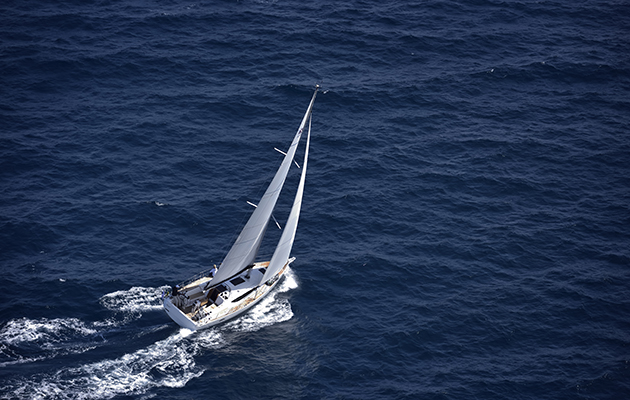
Offshore sailing skills: All you need to know
Will Bruton finds out what coastal cruisers should consider before taking their small yacht on an offshore adventure

Monohull or multihull: which is best for blue water?
As former editor of Yachting World, David Glenn has plenty of experience of both monohull and multihull cruising. Here he…

How to sail Biscay: 3 ways to tackle the milestone
Beyond Biscay is a diverse coastal cruising ground and the route to the warm waters of the Mediterranean. Will Bruton…
Their cruising costs were around €2,500 a month for the two of them, averaging out the most expensive parts of the journey from Sweden to the Canary Islands, when harbour fees were costing around €40 a night.
This would cover some eating out ashore and car rental for tours.
Over the longer term, a good rule of thumb is to allow 20% of the cost of your boat for running repairs to cover antifouling, sail replacement, servicing and, if you are leaving your boat to return home, you’ll need to factor in haul-out, storage and hurricane tie-downs.
If you plan to buy a boat, sail it back and sell it right after your trip, however, you may be able sidestep some ongoing costs.
Cutting the cord
Maybe you don’t have to wait until retirement to go cruising.
There is a strong argument for taking a career break (or breaks) and working for longer if necessary as it spreads the cost and reduces the risk of the big adventure never happening.

Additional offwind sails, like a furling Code 0, can keep the boat moving in light airs for more enjoyable sailing and to save fuel. Credit World Cruising Club
Around half of the people I meet on transatlantic rallies are taking sabbaticals and intending to return to the same post, or have quit a job.
Both options have become quite acceptable, and in some professions and countries sabbaticals are actively encouraged as a retention incentive.
‘Tell the world you are leaving,’ advises Kaj Maass.
‘Make sure you create some pressure on yourself to realise your dream. Involve your employer early on in the planning process. A modern employer will understand and respect your decision to explore the world and live out your dreams, maybe they even see a long-term benefit from the knowledge and experience you will gain from it and you can [negotiate] a leave of absence.’

Satellite comms add a level of safety and keeping in touch but can be costly. Credit: Richard Langdon/Ocean Images
Those running a business may bring in a trusted general manager or step up a family member while they are away.
Keeping tabs on business while away is possible (though it can be expensive in satellite data) but it’s not something that generally works well on a day-to-day basis.
You do need to be able to cut the ties to enjoy cruising, not least because the cruising life comes with its own workload, from maintenance to laundry.

Long-distance cruising comes with its own workload and maintenance. Credit: Kaj Maass/Malin Andersson
‘Trying to mix work and pleasure compromises both,’ says Stuart Letton.
Before setting out, the Lettons brought their son in to run their web-based business supplying global brands with customisable marketing material.
‘While our business was under new management, it was still a struggle for me to let go. I can remember sitting in WiFi cafés from Spain to the Galapagos trying to blend cruising with work and, while it helped my conscience, I doubt the effort did much for work or cruising.
‘That’s not to say it isn’t possible. With good WiFi and satellite connections you really can work pretty much anywhere . But if you don’t need to, I’d cut the ties, burn the bridges and go. If you need to work, fine, just get your management team in place, communication systems properly set up and resourced, and go.’

It helps to set a deadline so you can realise your dream and sail across the Atlantic. Credit: Kaj Maass/Malin Andersson
However you plan to break free, what really helps is a deadline: a date that you are going set off, with a scene you can visualise to keep you motivated as you work through the preparations and demands of shore life.
Most preparations are really just logistics, and you’re probably already pretty good at that.
The bigger obstacle is often mustering the courage to leave.
I often hear cruisers describe hassles – one described cruising as the act of sailing from one place where you couldn’t get something fixed to another where you hoped you would – yet when I ask for their best advice it usually boils down to a simple prescription: just go.
Kaj Maass said exactly that when I asked him that question.
‘Just do it. Life is too short not to live out your dreams.’
To rally or not?
This is entirely a personal choice.
Advantages of the ARC , which is the best organised and biggest, are great seminars, preparation information and tools.
It’s also an ideal way to meet lots of fascinating, like-minded people, and is agreed to be good value despite costs.
It also gives you a departure date to hold yourself too.

For a first taste of ocean sailing, it can be reassuring and fun to join a rally to sail across the Atlantic, like the ARC. Credit: James Mitchell/World Cruising Club
Plus is has good parties and entertainment on tap to keep crew happy.
The cons would be its early crossing date for the Tradewinds season, large fleet size (though check out ARC+, which is smaller) or if you just want to be low-key and go it alone.
The Viking Explorers rally is one alternative, but not many others still run.
If you do your own thing, you will still find a wonderful cruising community anywhere cruisers other, and there is fantastic support across the world for independent voyaging through the Ocean Cruising Club.
Preparations for sailing across the Atlantic – the basics
While in no way a comprehensive list of preparations, here are some jumping off points to think about when planning your voyage:
- Learn how to service and maintain your engine and key machinery, have a good set of tools on board. Video repair tips and techniques when you have technicians on board to refer to later.
- Have your yacht lifted, antifouled , stern gear serviced, and anodes replaced. Consider fitting a rope cutter . Also check steering systems and replace rudder bearings.
- Create a boat manual with all your procedures, equipment and the location of safety and medical equipment for crew to access.
- Fit an autopilot capable of handling your yacht in an ocean swell, fully laden downwind in 30 knots of breeze. Have a back-up if shorthanded, or two separate systems for redundancy.
- Have power systems checked and replace or upgrade batteries if necessary . If you upgrade batteries, consider if additional charging is necessary .
- Get first-class safety equipment for all crew on board.
- Have all sails serviced by a sail loft and consider double stitching all panels. With slab reefing mainsails, get a deep third reef.
- Set up a good boom preventer for downwind sailing on both tacks. That can be just lines and blocks but set up so you can gybe and switch preventers without leaving the cockpit.
- Check all running rigging and ensure you have adequate spare halyards set up before you depart. Think about chafe prevention.
- Choose your crew carefully. Make sure you are all comfortable sailing together and that roles are established well before you leave.
Enjoyed reading How to sail across the Atlantic and back?
A subscription to Yachting Monthly magazine costs around 40% less than the cover price .
Print and digital editions are available through Magazines Direct – where you can also find the latest deals .
YM is packed with information to help you get the most from your time on the water.
- Take your seamanship to the next level with tips, advice and skills from our experts
- Impartial in-depth reviews of the latest yachts and equipment
- Cruising guides to help you reach those dream destinations
Follow us on Facebook , Twitter and Instagram.

- OUR TRAWLER YACHTS
- – KROGEN 44 AE
- – KROGEN 48 AE
- – KROGEN 50 Open
- – KROGEN 52
- – KROGEN 58 EB
- – KROGEN 60 OPEN
- – KROGEN 70
- OUR PERFORMANCE YACHTS
- – SUMMIT MOTORYACHTS
- PRE-OWNED YACHTS
- Full Displacement Trawler Explained
- Kadey-Krogen Hull Design
- Bluewater Cruising
- Engines and Systems
- Construction
- Living On Our Trawlers
- Accommodations
- The Kadey-Krogen Team
- Trawler Living
- Atlantic Crossings
- Inside Passage
- Owner Groups and Blogs
- Latest News and Updates
- Waypoints Magazine
Crossing the Atlantic on a Yacht in Comfort
Experienced cruisers often discover Kadey-Krogen Yachts because they begin to search for yachts capable of crossing the Atlantic. If one searches the listings for Transatlantic boats for sale or contacts a broker with a very specific request to hear about yachts that can cross the Atlantic, they’re bound to discover plenty of superyachts, and some custom trawlers, and, of course, a selection of our models that are built to take on long bluewater cruising legs such as one takes on for an ocean crossinig.
Those who are more serious about open-ocean crossings begin to think about the best time to cross the Atlantic west to east and also consider provisioning, crew, a timetable, potential destinations, and all the factors, large and small, that enter into this exciting equation.

Lessons Learned in more than two years of cruising in Northern Europe

Journey from Rhode Island to Ireland Via the Azores
Yachting World
- Digital Edition

15 things you should know when planning an Atlantic crossing
- Elaine Bunting
- June 19, 2017
Our ultimate guide on things to consider if you're planning to sail across the Atlantic

Photo: Tor Johnson
The Atlantic crossing season occurs every winter. In the months leading up to Christmas, some 4-5,000 sailors will cross from Europe to the Caribbean on one of the biggest sailing adventures of their lives.
In most cases, the crossing is the culmination of years of planning and preparation. But if it’s your first time, are you missing something? You might be.
Here is a list of my top 15 tips for an Atlantic crossing, which I’ve drawn up both from my own ocean passages in the Atlantic, Pacific and Indian Oceans, and from talking to hundreds of transatlantic sailors over the years. So what do you really need to consider when planning your Atlantic crossing…
1. You don’t need a special boat
Time was when a proper offshore cruising yacht had chines, a ketch rig and self-steering gear at the stern. That was a perception, and perceptions change. Numerically, the most common transatlantic yachts these days are ordinary production cruisers with standard kit.

As for a watermaker, generator, SSB radio, etc: they’re all useful, but every additional item adds complication and service cost/time. Apart from a sound boat, all you really need is water, food, fuel and a (paper) copy of ‘North Atlantic, Southern Part’.
2. Keep it simple
A smart crossing is all about consistent speed, 24 hours a day. The key is not to have downtime.
There’s no need to fiddle around with twin headsails, Twistlerig or expensive new asymmetric spinnaker; a main and poled-out genoa ‘barn doors’ set-up will do fine. In fact, me and my other half won the ARC rally overall one year after sailing wing-and-wing almost the entire way.
Just keep an eye out for chafe, and be sure to set up a preventer on the boom and a foreguy topping lift and downhaul when poling out the headsail so you can furl in quickly when that night-time squall hits (which it will).
3. Revise your energy equation
Whatever power you think you’ll use on an ocean crossing, add on another third. Nav lights, radar, radio scheds, autopilot, watermaker, fridge, freezer, computer, fans – you name it, they all add up.
Increase the means of generating electricity with a diesel generator, larger alternator, solar panels and/or a towed turbine and look at means of making savings, such as fitting LED lights.
- 1. 1. You don't need a special boat
- 2. 4. Get some extra training
- 3. 7. Go the long way round
- 4. 10. Costs
- 5. 13. Be smart with your provisioning

How Far Can Yachts Travel? Helpful Examples (With Numbers)
There are several things to consider when asking the question: “How far can a yacht journey?”
There are many different variables, including the type of yacht, the size of the fuel tank(s), the weather, and the amount of crew/gear aboard.
Not to mention the skill and experience of the captain.
How Far Can A Yacht Travel?
Generally, a motorized yacht about 35 feet in length can travel around 200 miles at approximately 25 knots in an 8 hour day. At 35 knots, they can travel close to 300 miles in a day. With enough fuel or fill-ups, you can go on for thousands of miles.
With the addition of sails, a yacht can travel even further, but it takes longer.
Here’s everything you need to know!
Table of Contents

How Far Does the Average Yacht Travel?
This question is difficult to answer on its own.
However, on average, a 75-foot motorized yacht with a tank that can carry 11,000 liters of fuel can travel up to 1500 nautical miles.
If you are comparing your yacht to this average, make sure also to compare your tank size.
For example:
- A 95-foot yacht with a 9000-liter fuel tank can travel up to 1,200 nautical miles.
- A 40-foot yacht with a 5,000-liter fuel tank can travel up to 3,000 nautical miles.
Think of it this way: the bigger the boat, the bigger the fuel compartment.
The bigger the fuel tank (for the size of the boat,) the farther it can travel.
Other variables can affect those numbers, but these are the main factors you need to consider.
We have an article here with much more statistics and numbers on boating .
How Big is the Fuel Tank on a Yacht?
Different yachts have different-sized gas tanks on board.
The size of the fuel tank has a lot to do with how far it can travel.
After all, no fuel = no travel, right?
Not necessarily.
For a motorized yacht, there are really only two things to consider when trying to determine the distance it can travel:
- The amount of fuel you have (or how big the tank is)
- How much of it is burned by the engines (which is affected by different factors)
Side note: generally speaking, it is a good idea to have about one and a half times the amount of fuel you will need for the trip you want to make.
Different weather conditions can affect how slow your trip is, as well. Yachts are slower in rough weather. If there are bad weather conditions, yachts won’t be able to travel as far. On the opposite side, a yacht can travel much further in optimum weather conditions, when the engines don’t have to fight against the wind and choppy waters.
On the other hand, sailing boats are powered by the winds on the sea.
Weather can be finicky, and, because of that, most sailing yachts have an alternative form of power.
Some of those include:
- Auxiliary engines, usually diesel-powered
- Wind generators or solar panels
- Diesel generators
Remember to read up on international flag rules for boats before leaving.
How Far Can a Yacht Journey with a Full Fuel Tank?
Even superyachts come in different sizes and with different sized fuel tanks.
However, let’s say that you’re on a 130-foot yacht with a fuel tank of 22,420 liters.
If the yacht is cruising at around 20 knots, it can travel about 1500 nautical miles on that fuel tank.
To find how far you can go on one tank of fuel, you will have to:
- Clean your boat and ensure that everything is working properly (an unmaintained yacht uses more fuel per nautical mile)
- Refuel your boat and log your engine hours and start/stop times to find your fuel burn rate.
- Remember, it is important to measure your liters or gallons per hour of use instead of only using your fuel gauge (which might not be accurate over the full scale).
The fuel burn rate calculation is = fuel used / hours, resulting in liters or gallons per hour. The calculation for fuel efficiency is distance/fuel used, resulting in miles per gallon or liters.
The fuel burn rate and fuel efficiency (fuel mileage) are different at different speeds. If both are calculated at the vessel’s standard cruising speed, the fuel efficiency is the cruising speed divided by the fuel burn rate.
For example, a yacht cruising at 10 knots burning 2.5 gallons per hour has a fuel efficiency of 4 nautical miles per gallon (10 / 2.5).
How Many Days Can you Sail For?
Depending on the vessel, you can sail anywhere from one day (on a small sailing yacht ) to a month, and some boats have sailed around the world without stopping.
You must account for:
- The number of people on your crew,
- what supplies you have on board,
- if you count for the times you dock for supplies or not, and
- the seaworthiness of your yacht
A 30-foot sailing yacht can carry enough supplies for someone to stay aboard for 90 days (or even longer).
There is a nonstop ocean sailing yacht race where some of the participants stay on their yachts from 110 to 160 days! Some even sail for 200 days!
You can also apply for jobs on boats to travel that far.
Can a Yacht Cross the Pacific Ocean?
Cruising around the world is a big dream for several yacht enthusiasts.
Being able to leave their day-to-day lives and do an amazing adventure like “boating around the world” is a legacy you can leave with your family.
Generally speaking, it takes about 10 – 12 days to cross the Pacific Ocean on a large yacht.
However, not all yachts are capable of making the trip.
The following summary describes the capabilities of the four yacht design categories used in the EU and UK:
Category D Yachts:
Category D yachts are rated for sheltered coasts and inland boating.
This means you can use them in lakes, protected harbors, and rivers. They would be fine as long as the waves don’t reach 4 feet in height as a rule.
However, these boats wouldn’t be able to make the cross-ocean trip.
Category C Yachts:
Category C yachts are used inshore.
Inshore means that you can go away from the protected harbors for some distance, but these boats still can’t handle waves that reach up to 8 feet in height.
So, while they can move safely around large lakes and bays, they still wouldn’t be able to make the cross-ocean trip.
Category B Yachts:
Category B yachts are used offshore and can handle waves that reach up to 13 feet in height and strong winds.
However, you still wouldn’t want to take a category B yacht on the cross-ocean trip because it isn’t self-sustaining.
At least, not for the time it takes to cross the Pacific Ocean. Besides, it wouldn’t do well in rough weather.
Category A Yachts:
Category A yachts can handle waves up to 23 feet in height and wind over 47 knots.
They are also designed to be self-sustainable for long voyages.
In other words, they are explorer’s vessels.
Can a Yacht Cross the Atlantic Ocean?

To cross the Atlantic, an average motorized yacht would need a tank with a capacity of about 5000 liters of fuel at a fuel efficiency of 2.5 nautical miles per gallon.
This would be for a fuel use rate of 4 gallons per hour at 10 knots cruising speed. This is at cruising speed, of course. hey can’t be traveling at maximum speed for long periods of time (which would burn through the fuel faster).
At 10 knots, the trip (about 3,000 miles) would take 300 hours or 12.5 days.
Sailing yachts travel the Atlantic every year since the only fuel they need is for generators that power onboard appliances.
Though, some fuel may be used to power the boat when the weather isn’t cooperating.
It takes about 4 – 5 days to cross the Atlantic Ocean on a fast yacht going 25 knots . However, it would take longer in a sailing yacht (which also depends on the winds).
We have much more info on what you need to know about which yacht types can cross oceans. It’s a must-read if you are considering a trip over the bigger oceans on a yacht.
What is a Long-Range Expedition Yacht?
Long-range expedition yachts are yachts that are self-sustaining.
They are also built with long voyages in mind.
They normally feature:
- Adequate crew capacities, amenities, and storage
- Have a long cruising range, meaning large capacity fuel and water tanks
- Have a robust hull for the long trip
They have to withstand extreme weather conditions since they have to travel across large water bodies. They should be able to withstand the effects of sailing thousands of miles of traveling a year.
They must be easy to maintain and operate. This is due to the distance they must travel. After all, these yachts are often operated by a few laymen boaters (in addition to having a few experienced sailors with them).
Fishing trawlers (designed for many days at sea with cabins) are hearty and can travel the same distance (within range of their fuel tanks) as an expedition yacht but are typically not finished as a yacht.
They also have the appearance of a hearty, military-style craft with tall bows, broken sheers, and vertical or forward raking windshields.
If painted naval gray, they definitely fit the aesthetic of a military-grade vessel. But the reason for all of those features is because both expedition yachts and military vessels move long distances for extended periods of time.
Final Thoughts:
The distance that a yacht can travel depends on the size of the fuel tank(s) and the fuel use rate.
A yacht with a large fuel tank or a sailing yacht (which only requires the wind and carries fuel for onboard generators) can travel much further than a small day cruiser yacht.
If you want to take a long voyage, make sure to take the right precautions first. When crossing either the Pacific or the Atlantic Ocean , you must make sure your boat is a category A yacht (or an expedition yacht). You must also ensure that your crew is experienced in crossing the ocean.
If you are on a yacht, it is never recommended to cross the ocean by yourself. While you may handle a smaller boat in waters closer to the shore, there is quite a bit of difference in a large yacht—especially when you are far from land.
You’ll also have to make sure you upgrade some amenities. Your water maker, power generation system, autopilot, and your freezer, just to name a few, are some of the systems which need to be in peak condition when making that long voyage.
In the end, the differences between having a boat that travels a short distance and a long one are:
- Made for Distance, and
- Well-Maintained
Click to share...

Catamaran Across the Atlantic: Times, Routes and Dangers!
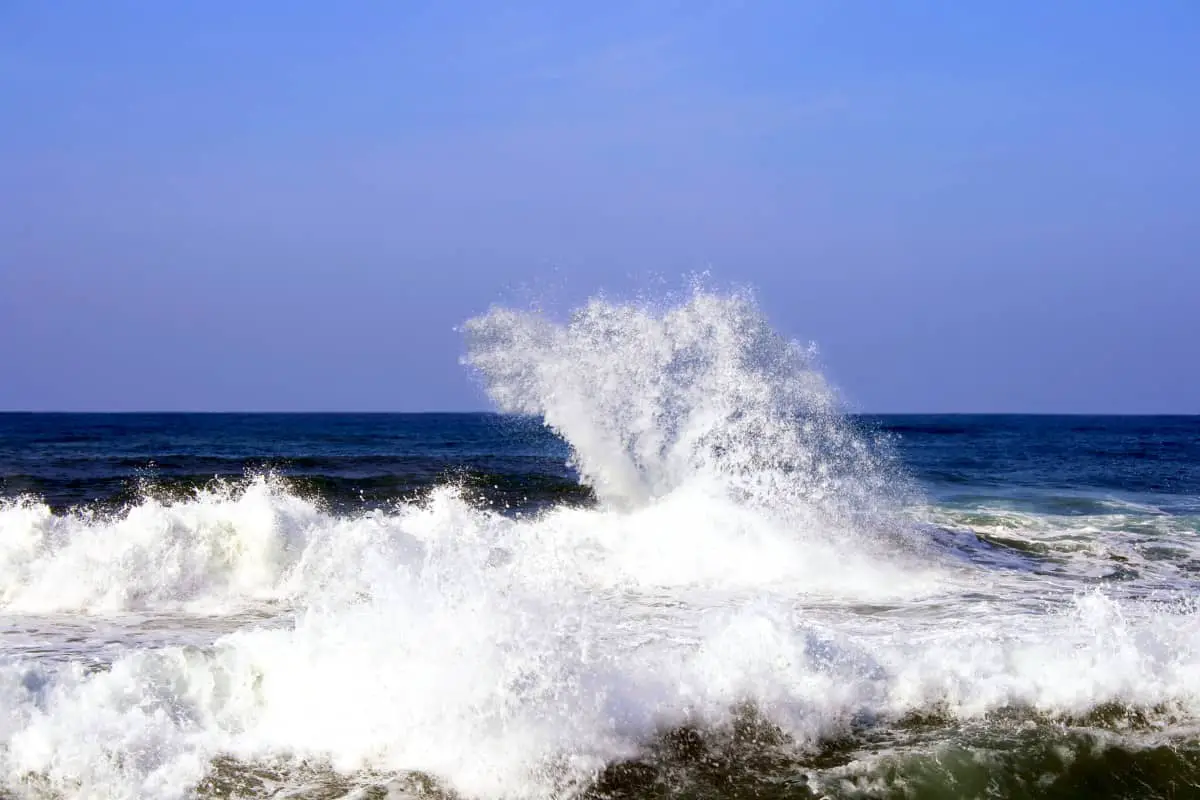
As an Amazon Associate, we earn from qualifying purchases. We may also earn commissions if you purchase products from other retailers after clicking on a link from our site.
For many, the idea of sailing across the Atlantic in a catamaran and spending the summer sailing around the Mediterranean or Caribbean sounds like the ideal form of retirement. While cruising the open sea is certainly an adventure of a lifetime, you need to have an idea of the amount of time your voyage will take so you can stock up adequately and plan ahead. So, how long does it take to cross the Atlantic with a catamaran?
Crossing the Atlantic Ocean with a catamaran normally takes three to four weeks. The exact duration of your voyage may vary depending on wind speed and patterns, the path you take, and the speed of your catamaran.
As complex as sailing is in itself, taking a voyage across the open ocean on a sailboat at the mercy of the wind is even more complicated. Read on to learn more about the complexities of sailing across the Atlantic on a catamaran, how fast you are likely to travel, and more.
Table of Contents
The Voyage Across the Atlantic
One of the largest challenges people face when sailing is finding consistent wind blowing in the correct direction. Wind patterns are one of the main determinants of navigable sailing routes.
After hundreds of years of sailing across the Atlantic, multiple routes have been discovered, but not all are deemed navigable. Generally, sailors tend to favor these two routes:
- The Southern Passage . This route involves traveling east to west from Europe and Africa to North and South America. It starts from Portugal or Canary Islands off the coast of Northern Africa to the Windward Islands of the Caribbean.
- The Northern Passage . With this route, you travel west to east from the Caribbean to Portugal. You start at the island nation of Bermuda, sail north the Portuguese Azores, and then east to Portugal’s shore.
These routes are based on a series of consistent wind patterns known as the trade winds. Each spans approximately 4,000 nautical miles (7,408 km), with each nautical mile spanning approximately 1.15 land miles (1.85 km).
However, it is generally advised to add approximately 15-20% of the theoretical distance traveled because sailors often need to adjust course to match the wind. That brings the real distance of the voyage to about 4,700 nautical miles (8,704.4 km).
The Impact of Catamaran Speed and Time Spent Traveling
Covering 5,000 miles (8,046.72 km) on a sailboat takes a significant amount of time. While the speed of your catamaran is arguably the biggest determinant of the duration of your voyage, the amount of time you’re willing to be on the move also factors in.
Some people limit their sailing speed during the night, while others cruise at constant speeds. The number of hours you are sailing per day will greatly impact how quickly you cross the ocean.
As for the speed, catamaran’s can max out at around 15 to 20 knots, with some of the fastest hitting speeds of 60 knots. However, the average speed for most sailors is about 5-9 knots. Knots are the nautical equivalent of miles per hour. Moving at the speed of 1 knot means that you are moving 1 nautical mile per hour (1.85 kilometers per hour).
If you were to travel at a speed of 7 knots for 24 hours, you would travel about 170 miles. However, most people move slower than that, meaning you’re likely to cover less than that distance in a day.
The daily range of your catamaran may also factor in. Most catamarans can easily cover 100 nautical miles (185.2 km) per day. That range largely depends on the wind speed and direction, as well as whether you engage the engine. The farther you can travel in a day, the shorter your voyage will be.
What does all this mean for your sailing time? In a phrase, you can control most of the variables.
If you decide to sail your catamaran at 7 knots every day for 24 hours, you will get across the Atlantic in about 24 days (a little more than three weeks).
If you decide to travel at that speed for less time, or go slower or faster for different amounts of time, your voyage duration will change accordingly.
Potential Challenges of Crossing the Atlantic by Catamaran

Having understood the length of the voyage and how much time it may take to complete, you’re probably wondering whether there are other difficulties you might encounter. It’s a valid concern, too, because challenges can significantly increase the time you take to cross the Atlantic by boat.
As far as difficulties go, the most critical ones have to do with the weather conditions. Things like storms and rough waters can not only affect your voyage duration, but also your safety.
The good news is that most decent catamarans can take on almost any form of weather with a solid crew at the helm. As long as you are not sailing the Atlantic during a hurricane, your voyage won’t be too bad. With light air and beautiful scenery, crossing the Atlantic can be a phenomenal, hassle-free experience.
But if you are underprepared or do not have the skills to sail, crossing the Atlantic by catamaran will be incredibly difficult.
Storms on the open ocean are nothing like what they are on land, and the wind and waves will be significantly larger than you might have ever seen.
It can be psychologically draining if you are alone in the open ocean. So in addition to making sure that you have the correct supplies and skills, you’ll want to bring a crew or a few friends for company.
Traveling across the Atlantic by catamaran will take anywhere between 21 and 31 days. This can be longer or shorter depending on the speed of the catamaran and the number of hours you sail a day.
Should you decide to cross the ocean by catamaran, be sure that you have the equipment and skills for such a voyage . Hire a crew if you need to, or at least find someone to help and company. Once you do this, you can enjoy your smooth sailing!
- Prokerala: Flight time from Beijing to New York
- Catamaran: How Far Can You Sail a Catamaran In a Day/Month/Year?
- NOAA: What is the difference between a nautical mile and a knot?
- Improve Sailing: How Long Does it Take to Sail Across the Atlantic?
- Calculator Converter: Nautical Miles to Miles
Owner of CatamaranFreedom.com. A minimalist that has lived in a caravan in Sweden, 35ft Monohull in the Bahamas, and right now in his self-built Van. He just started the next adventure, to circumnavigate the world on a Catamaran!
Leave a Reply Cancel reply
Your email address will not be published. Required fields are marked *
Save my name and email in this browser for the next time I comment.
Recent Posts
Must-Have Boat Gear for Catamaran Sailors!
Sailing is probably the most gear-intensive activity I've ever done; there are so many decisions to be made about what gear to buy now, for tomorrow, and what to definitely never buy. The gear on...
6 Best Trailerable Trimarans For Bluewater and Coastal Sailing
Having a boat costs a lot of money, even when you are not using it, marina fees, etc. And once it is in the water most sailors never go very far from their "home marina" and sailing will be somewhat...
Log in or Sign up

You are using an out of date browser. It may not display this or other websites correctly. You should upgrade or use an alternative browser .

vacationboat New Member
How large does a motor yacht need to be for it to be capable of crossing the atlantic in relative comfort and safety? I am considering buying a yacht in the range od 20-60m. I know the larger yachts can move between the med and the carribean what about say a 20m vessel? Thanks Jon
AMG YF Moderator
Anything is possible, but this is what I should do with a 20-40 m yacht; http://www.yacht-transport.com/index.php?sid=1&l=eng
Yacht News YF News Editor
Heesens' 3700's can cross the Atlantic...which i think is phenomenal for a vessel their size...
C4ENG Senior Member
yachtluver said: Heesens' 3700's can cross the Atlantic...which i think is phenomenal for a vessel their size... Click to expand...
sailronin Senior Member
The Nordhaven Rally crossed the Atlantic in motor yachts (trawler style) from 46 feet to 72 feet. I believe there were about a dozen yachts in the rally. The Delta 70 foot trawler "Zopilote" circumnavigated on it's own bottom, including the Pacific crossings. On the other hand I know of several 170 plus foot motoryachts that are not able to cross the Atlantic, let alone the Pacific. It's not the size that matters, it's the design and intended purpose of the vessel. Dave
sailronin said: It's not the size that matters, it's the design and intended purpose of the vessel. Dave Click to expand...
C4ENG said: That Heesens Man of Steel 3700 did do a crossing but just barely made it in with hardly any fuel left. I don't think I would had taken that chance unless I was going to get paid huge (and yet I would still be thinking good and hard if I wanted to chance it or not). A rule of thumb I always heard is when you are taking a trip you should always try to plan in having a third of fuel in reserve for when you arrive at your destination. That way if you do get held up, you have that reserve already for the unexpected. Those smaller yachts just don't have that sort of capacity for that long distance. AMG has the safest and best tried and proven idea for doing the crossings in what I have seen in my experiences. Click to expand...
airship Senior Member
I belive that Thor Heyerdahl crossed with a very small crew on RaII back in 1970 or so. This vessel crossed the widest part of the Atlantic 6100 km (3270 nautical miles) in 57 days, from Safi to Barbados. I might be smoking as I write this though...
Horray... to Barbados my home Island!...lol
Garry Hartshorn Senior Member
Seeing as this has gone slightly off track I thought I might post this link http://www.miniclassus.com
Kevin YF Moderator
Gotta' love doing a transat alone in a 21 foot sailboat!
that is insane...what tempts these people to do these things?
I dunno', but I'd try it. If I had the money, sponsors, and time I'd give a solo transat a shot for sure!!
Codger YF Wisdom Dept.
yachtluver said: that is insane...what tempts these people to do these things? Click to expand...

LOL I haven't even done a quarter of what I'd like to in life, but a Mini Transat is already on my list.
Antonio Torres Member
1984 - brazilian Amyr Klink crossed (alone) the South Atlantic in a rowing small boat. No sails, no engine. LOA: 5.94 m Displacement: 1200 kg Propulsion: human muscles (ocean streams also helped) Fuel: dry food and water (soft) Duration: 100 days Distance: 3500 nm Oops, doesnt fit this thread requirements. Not a motor yacht, no comfort and no crew.
YachtForums Administrator
Antonio Torres said: Oops, doesnt fit this thread requirements. Not a motor yacht, no comfort and no crew. Click to expand...
You guys are mad but i guess thats the adventurous side of people. I wasnt going nowhere is something so small.
pamibach Member
Yacht News said: ↑ that is insane...what tempts these people to do these things? Click to expand...
Capt Ralph Senior Member
pamibach said: ↑ LOL! I was thinking the same thing! WHY?? Click to expand...

- No, create an account now.
- Yes, my password is:
- Forgot your password?


IMAGES
VIDEO
COMMENTS
The size of yacht needed to safely and comfortably cross the Atlantic Ocean will depend on factors such as the number of people on board, the type of voyage, and the experience of the captain and crew. Generally, the vessel should be a minimum of 36 feet in length and have enough stowage capacity to carry enough supplies and provisions for the ...
To cross the Atlantic, you'll need a boat that's at least 30 feet long, whether you're sailing or motoring. For safety and comfort, your boat should be at least 40 feet long. Although the experience of sailing or motoring across the Atlantic is vastly different, both require a boat of this size. If you plan on having a crew on board, you ...
Yes, mega yachts and superyachts can cross the Atlantic or the Pacific Ocean. We know it would take a superyacht around 10 days to cross, but the Pacific Ocean is a larger body of water for superyachts to cross but it is possible to do so. When yachts are traveling from the US to areas such as Fiji or the Islands of Tahiti, the boats will sail ...
There are also sailing cargo Atlantic crossing possibilities out there. ' Tres Hombres ' is a 32 metres Schooner transporting traditional goods like rum and chocolate between the Caribbean and Europe. Timbercoast is a 1920 built 43.5m Schooner that transports goods like coffee and gin.
The Atlantic is a notoriously windy ocean and can be treacherous in the winter months. -Make sure you have a good weather forecast and are prepared for rough seas. -Make sure the sails are in good condition, the hull is clean and free of barnacles, and the engine is well-maintained. -Finally, you need to make sure your yacht is in good condition.
The best yachts for a transatlantic crossing. Neel 51. Outremer 5X. Hallberg-Rassy 57. There are many yachts which are suitable for a transatlantic passage. Some will be less expensive, some will be more comfortable, faster, or better suited to you, your experience, and your budget.
Yachts. My first Atlantic Crossing took roughly fourteen days to complete. Most Superyachts take nine to fourteen days to cross. Yachts typically tend to cross at slower cruising speeds of 8 - 15kts. For more information on what defines a yacht, see our previous lesson.
Last year, when we carried out our annual survey of ARC skippers, we found that yachts of between 46ft and 55ft had a battery capacity, on average, of 700ah, rising to 1,000ah for yachts over 56ft ...
One of those yachts is this superbly equipped top of the range Sunreef Yachts 70ft sailing catamaran. Book her now from 100,000 - 125,000 Eur for a 5 week adventure crossing the Atlantic from Gran Canaria to Martinique. You could also extend the experience and request a one week stopover in Cape Verde or start in the Mediterranean 2-3 weeks ...
Atlantic Crossing: Sailboat or Catamaran. The vastness of the Atlantic Ocean tests crews' sailing skills and endurance, whether they choose to ply the waves aboard a traditional sailboat or a modern catamaran. Both vessels have advantages, offering completely different sailing experiences. Sailing boat: strong emotions and contact with the sea.
2. 30 expert tips for crossing the Atlantic: 6-10; 3. 30 expert tips for crossing the Atlantic: 11-15; 4. 30 expert tips for crossing the Atlantic: 16-20; 5. 30 expert tips for crossing the ...
FOOD PREPARATION. Our chef will prepare three meals a day for seven people for +/- 16 days, which is the average time it takes us to sail across the Atlantic. Below are some handy hints from how our chef does this: - Fruit and vegetables are cut up, portioned and frozen for future use. - Some dishes are made in advance and frozen - these ...
Crossing the Atlantic has long been regarded as one of the most exhilarating maritime adventures you can have. From the days of Christopher Columbus in the 15th century to modern times, this journey continues to captivate the imaginations of sailors, superyacht owners, and boating enthusiasts. Today, advancements in technology and yacht design have made this ambitious voyage more attainable ...
A 35-footer might take 25-28 days to sail across the Atlantic from the Canaries to the West Indies. Obviously, the longer and faster your boat is, the more stowage and water tankage you will have for less time at sea. You might also ask yourself which parts of the adventure are the most valuable to you.
Crossing the Atlantic on a Yacht in Comfort. Experienced cruisers often discover Kadey-Krogen Yachts because they begin to search for yachts capable of crossing the Atlantic. If one searches the listings for Transatlantic boats for sale or contacts a broker with a very specific request to hear about yachts that can cross the Atlantic, they're ...
Most boats take a more middle route, depending on the forecast. Chris Tibbs is a meteorologist and sailor with over 250,000 miles at sea, including three circumnavigations and six speed records.
25 MPH. Airplane. 2010. London - New York. 8 Hours. 478 Knots. 550 MPH. Table comparing time to complete an Atlantic crossing. Looking at this table we can clearly see that the time it takes to cross the Atlantic has decreased exponentially.
You can cross the Pacific and Atlantic oceans on a sailing yacht or a motor yacht. It would be best to have a big enough tank to hold the amount of fuel you expect to burn. This being said, not all yachts are capable of making these trips. If you decide to cross either of these oceans, you'll want to make sure you have an ocean-faring yacht ...
Yes, a 40-foot yacht can cross the Atlantic Ocean if she is suitably prepared and outfitted to do so. Bluewater yachts are for those looking to explore the world; who want to throw off the bow lines and leave the safe harbor to see what lies across the ocean. There are many types of yachts that can safely travel the ocean; to see some of the ...
Just keep an eye out for chafe, and be sure to set up a preventer on the boom and a foreguy topping lift and downhaul when poling out the headsail so you can furl in quickly when that night-time ...
A 95-foot yacht with a 9000-liter fuel tank can travel up to 1,200 nautical miles. A 40-foot yacht with a 5,000-liter fuel tank can travel up to 3,000 nautical miles. Think of it this way: the bigger the boat, the bigger the fuel compartment. ... To cross the Atlantic, an average motorized yacht would need a tank with a capacity of about 5000 ...
As for the speed, catamaran's can max out at around 15 to 20 knots, with some of the fastest hitting speeds of 60 knots. However, the average speed for most sailors is about 5-9 knots. Knots are the nautical equivalent of miles per hour. Moving at the speed of 1 knot means that you are moving 1 nautical mile per hour (1.85 kilometers per hour).
The Nordhaven Rally crossed the Atlantic in motor yachts (trawler style) from 46 feet to 72 feet. I believe there were about a dozen yachts in the rally. The Delta 70 foot trawler "Zopilote" circumnavigated on it's own bottom, including the Pacific crossings.